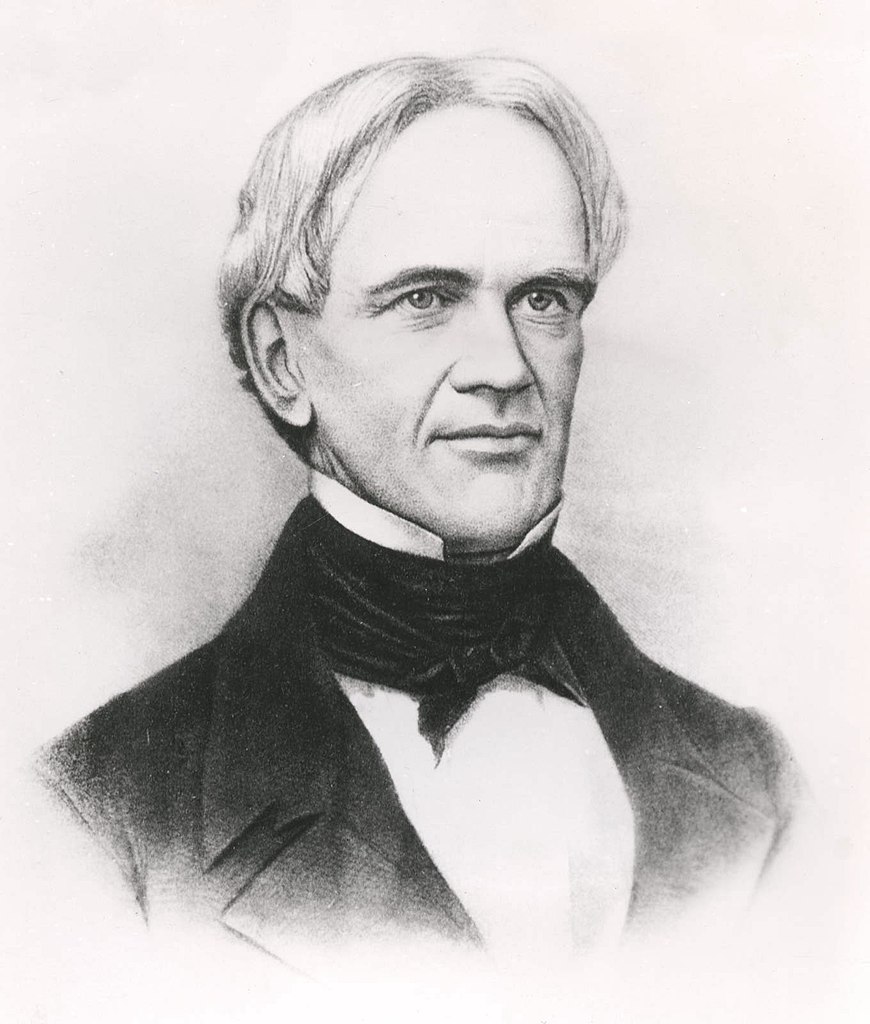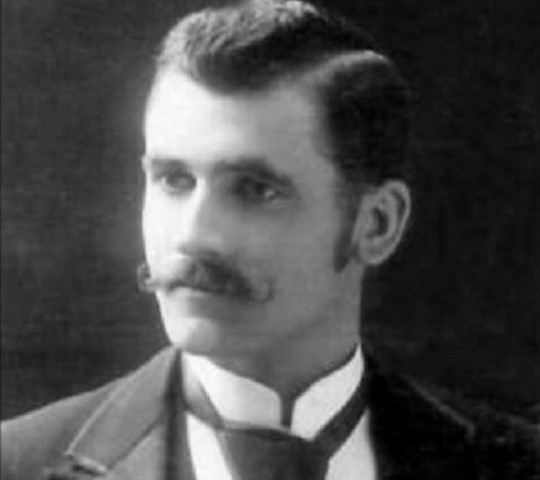

The History of Homework: Why Was it Invented and Who Was Behind It?
- By Emily Summers
- February 14, 2020
Homework is long-standing education staple, one that many students hate with a fiery passion. We can’t really blame them, especially if it’s a primary source of stress that can result in headaches, exhaustion, and lack of sleep.
It’s not uncommon for students, parents, and even some teachers to complain about bringing assignments home. Yet, for millions of children around the world, homework is still a huge part of their daily lives as students — even if it continues to be one of their biggest causes of stress and unrest.
It makes one wonder, who in their right mind would invent such a thing as homework?
Who Invented Homework?
Pliny the younger: when in ancient rome, horace mann: the father of modern homework, the history of homework in america, 1900s: anti-homework sentiment & homework bans, 1930: homework as child labor, early-to-mid 20th century: homework and the progressive era, the cold war: homework starts heating up, 1980s: homework in a nation at risk, early 21 st century, state of homework today: why is it being questioned, should students get homework pros of cons of bringing school work home.

Online, there are many articles that point to Roberto Nevilis as the first educator to give his students homework. He created it as a way to punish his lazy students and ensure that they fully learned their lessons. However, these pieces of information mostly come from obscure educational blogs or forum websites with questionable claims. No credible news source or website has ever mentioned the name Roberto Nevilis as the person who invented homework . In fact, it’s possible that Nevilis never even existed.
As we’re not entirely sure who to credit for creating the bane of students’ existence and the reasons why homework was invented, we can use a few historical trivia to help narrow down our search.
Mentions of the term “homework” date back to as early as ancient Rome. In I century AD, Pliny the Younger , an oratory teacher, supposedly invented homework by asking his followers to practice public speaking at home. It was to help them become more confident and fluent in their speeches. But some would argue that the assignment wasn’t exactly the type of written work that students have to do at home nowadays. Only introverted individuals with a fear of public speaking would find it difficult and stressful.
It’s also safe to argue that since homework is an integral part of education, it’s probable that it has existed since the dawn of learning, like a beacon of light to all those helpless and lost (or to cast darkness on those who despise it). This means that Romans, Enlightenment philosophers, and Middle Age monks all read, memorized, and sang pieces well before homework was given any definition. It’s harder to play the blame game this way unless you want to point your finger at Horace Mann.
In the 19 th century, Horace Mann , a politician and educational reformer had a strong interest in the compulsory public education system of Germany as a newly unified nation-state. Pupils attending the Volksschulen or “People’s Schools” were given mandatory assignments that they needed to complete at home during their own time. This requirement emphasized the state’s power over individuals at a time when nationalists such as Johann Gottlieb Fichte were rallying support for a unified German state. Basically, the state used homework as an element of power play.
Despite its political origins, the system of bringing school assignments home spread across Europe and eventually found their way to Horace Mann, who was in Prussia at that time. He brought the system home with him to America where homework became a daily activity in the lives of students.
Despite homework being a near-universal part of the American educational experience today, it hasn’t always been universally accepted. Take a look at its turbulent history in America.
In 1901, just a few decades after Horace Mann introduced the concept to Americans, homework was banned in the Pacific state of California . The ban affected students younger than 15 years old and stayed in effect until 1917.
Around the same time, prominent publications such as The New York Times and Ladies’ Home Journal published statements from medical professionals and parents who stated that homework was detrimental to children’s health.
In 1930, the American Child Health Association declared homework as a type of child labor . Since laws against child labor had been passed recently during that time, the proclamation painted homework as unacceptable educational practice, making everyone wonder why homework was invented in the first place.
However, it’s keen to note that one of the reasons why homework was so frowned upon was because children were needed to help out with household chores (a.k.a. a less intensive and more socially acceptable form of child labor).
During the progressive education reforms of the late 19 th and early 20 th centuries, educators started looking for ways to make homework assignments more personal and relevant to the interests of individual students. Maybe this was how immortal essay topics such as “What I Want to Be When I Grow Up” and “What I Did During My Summer Vacation” were born.
After World War II, the Cold War heated up rivalries between the U.S. and Russia. Sputnik 1’s launch in 1957 intensified the competition between Americans and Russians – including their youth.
Education authorities in the U.S. decided that implementing rigorous homework to American students of all ages was the best way to ensure that they were always one step ahead of their Russian counterparts, especially in the competitive fields of Math and Science.
In 1986, the U.S. Department of Education’s pamphlet, “What Works,” included homework as one of the effective strategies to boost the quality of education. This came three years after the National Commission on Excellence in Education published “ Nation at Risk: The Imperative for Educational Reform .” The landmark report lambasted the state of America’s schools, calling for reforms to right the alarming direction that public education was headed.
Today, many educators, students, parents, and other concerned citizens have once again started questioning why homework was invented and if it’s still valuable.
Homework now is facing major backlash around the world. With more than 60% of high school and college students seeking counselling for conditions such as clinical depression and anxiety, all of which are brought about by school, it’s safe to say that American students are more stressed out than they should be.
After sitting through hours at school, they leave only to start on a mountain pile of homework. Not only does it take up a large chunk of time that they can otherwise spend on their hobbies and interests, it also stops them from getting enough sleep. This can lead to students experiencing physical health problems, a lack of balance in their lives, and alienation from their peers and society in general.
Is homework important and necessary ? Or is it doing more harm than good? Here some key advantages and disadvantages to consider.
- It encourages the discipline of practice
Using the same formula or memorizing the same information over and over can be difficult and boring, but it reinforces the practice of discipline. To master a skill, repetition is often needed. By completing homework every night, specifically with difficult subjects, the concepts become easier to understand, helping students polish their skills and achieve their life goals.
- It teaches students to manage their time
Homework goes beyond just completing tasks. It encourages children to develop their skills in time management as schedules need to be organized to ensure that all tasks can be completed within the day.
- It provides more time for students to complete their learning process
The time allotted for each subject in school is often limited to 1 hour or less per day. That’s not enough time for students to grasp the material and core concepts of each subject. By creating specific homework assignments, it becomes possible for students to make up for the deficiencies in time.
- It discourages creative endeavors
If a student spends 3-5 hours a day on homework, those are 3-5 hours that they can’t use to pursue creative passions. Students might like to read leisurely or take up new hobbies but homework takes away their time from painting, learning an instrument, or developing new skills.
- Homework is typically geared toward benchmarks
Teachers often assign homework to improve students’ test scores. Although this can result in positive outcomes such as better study habits, the fact is that when students feel tired, they won’t likely absorb as much information. Their stress levels will go up and they’ll feel the curriculum burnout.
- No evidence that homework creates improvements
Research shows that homework doesn’t improve academic performance ; it can even make it worse. Homework creates a negative attitude towards schooling and education, making students dread going to their classes. If they don’t like attending their lessons, they will be unmotivated to listen to the discussions.
With all of the struggles that students face each day due to homework, it’s puzzling to understand why it was even invented. However, whether you think it’s helpful or not, just because the concept has survived for centuries doesn’t mean that it has to stay within the educational system.
Not all students care about the history of homework, but they all do care about the future of their educational pursuits. Maybe one day, homework will be fully removed from the curriculum of schools all over the world but until that day comes, students will have to burn the midnight oil to pass their requirements on time and hopefully achieve their own versions of success.
About the Author
Emily summers.

Your Guide to Surviving College by Avoiding These Bad Habits

Balancing Acts: Managing Career Demands While Caring for an Elderly Parent

What Do the Crane Operation Signals Mean?

Why You Should Learn a New Language

Debunking the Myth of Roberto Nevilis: Who Really Invented Homework?

Is the D Important in Pharmacy? Why Pharm.D or RPh Degrees Shouldn’t Matter

How to Email a Professor: Guide on How to Start and End an Email Conversation

Everything You Need to Know About Getting a Post-Secondary Education

Grammar Corner: What’s The Difference Between Analysis vs Analyses?

The Surprising History of Homework Reform
Really, kids, there was a time when lots of grownups thought homework was bad for you.

Homework causes a lot of fights. Between parents and kids, sure. But also, as education scholar Brian Gill and historian Steven Schlossman write, among U.S. educators. For more than a century, they’ve been debating how, and whether, kids should do schoolwork at home .

At the dawn of the twentieth century, homework meant memorizing lists of facts which could then be recited to the teacher the next day. The rising progressive education movement despised that approach. These educators advocated classrooms free from recitation. Instead, they wanted students to learn by doing. To most, homework had no place in this sort of system.
Through the middle of the century, Gill and Schlossman write, this seemed like common sense to most progressives. And they got their way in many schools—at least at the elementary level. Many districts abolished homework for K–6 classes, and almost all of them eliminated it for students below fourth grade.
By the 1950s, many educators roundly condemned drills, like practicing spelling words and arithmetic problems. In 1963, Helen Heffernan, chief of California’s Bureau of Elementary Education, definitively stated that “No teacher aware of recent theories could advocate such meaningless homework assignments as pages of repetitive computation in arithmetic. Such an assignment not only kills time but kills the child’s creative urge to intellectual activity.”
But, the authors note, not all reformers wanted to eliminate homework entirely. Some educators reconfigured the concept, suggesting supplemental reading or having students do projects based in their own interests. One teacher proposed “homework” consisting of after-school “field trips to the woods, factories, museums, libraries, art galleries.” In 1937, Carleton Washburne, an influential educator who was the superintendent of the Winnetka, Illinois, schools, proposed a homework regimen of “cooking and sewing…meal planning…budgeting, home repairs, interior decorating, and family relationships.”
Another reformer explained that “at first homework had as its purpose one thing—to prepare the next day’s lessons. Its purpose now is to prepare the children for fuller living through a new type of creative and recreational homework.”
That idea didn’t necessarily appeal to all educators. But moderation in the use of traditional homework became the norm.
Weekly Newsletter
Get your fix of JSTOR Daily’s best stories in your inbox each Thursday.
Privacy Policy Contact Us You may unsubscribe at any time by clicking on the provided link on any marketing message.
“Virtually all commentators on homework in the postwar years would have agreed with the sentiment expressed in the NEA Journal in 1952 that ‘it would be absurd to demand homework in the first grade or to denounce it as useless in the eighth grade and in high school,’” Gill and Schlossman write.
That remained more or less true until 1983, when publication of the landmark government report A Nation at Risk helped jump-start a conservative “back to basics” agenda, including an emphasis on drill-style homework. In the decades since, continuing “reforms” like high-stakes testing, the No Child Left Behind Act, and the Common Core standards have kept pressure on schools. Which is why twenty-first-century first graders get spelling words and pages of arithmetic.
Support JSTOR Daily! Join our new membership program on Patreon today.

JSTOR is a digital library for scholars, researchers, and students. JSTOR Daily readers can access the original research behind our articles for free on JSTOR.
Get Our Newsletter
More stories.

A Bodhisattva for Japanese Women

Asking Scholarly Questions with JSTOR Daily

Confucius in the European Enlightenment

Watching an Eclipse from Prison
Recent posts.
- Alfalfa: A Crop that Feeds Our Food
- But Why a Penguin?
- When All the English Had Tails
- Shakespeare and Fanfiction
- Sheet Music: the Original Problematic Pop?
Support JSTOR Daily
Sign up for our weekly newsletter.

Who Invented Homework? A Big Question Answered with Facts

Crystal Bourque

Delving into the intriguing history of education, one of the most pondered questions arises: Who invented homework?
Love it or hate it, homework is part of student life.
But what’s the purpose of completing these tasks and assignments? And who would create an education system that makes students complete work outside the classroom?
This post contains everything you’ve ever wanted to know about homework. So keep reading! You’ll discover the answer to the big question: who invented homework?
Who Invented Homework?
The myth of roberto nevilis: who is he, the origins of homework, a history of homework in the united states, 5 facts about homework, types of homework.
- What’s the Purpose of Homework?
- Homework Pros
- Homework Cons
When, How, and Why was Homework Invented?

Daniel Jedzura/Shutterstock.com
To ensure we cover the basics (and more), let’s explore when, how, and why was homework invented.
As a bonus, we’ll also cover who invented homework. So get ready because the answer might surprise you!
It’s challenging to pinpoint the exact person responsible for the invention of homework.
For example, Medieval Monks would work on memorization and practice singing. Ancient philosophers would read and develop their teachings outside the classroom. While this might not sound like homework in the traditional form we know today, one could argue that these methods helped to form the basic structure and format.
So let’s turn to recorded history to try and identify who invented homework and when homework was invented.
Pliny the Younger

Credit: laphamsquarterly.org
Mention of homework appears in the writings of Pliny the Younger, meaning we can trace the term ‘homework’ back to ancient Rome. Pliny the Younger (61—112 CE) was an oratory teacher, and often told his students to practice their public speaking outside class.
Pliny believed that the repetition and practice of speech would help students gain confidence in their speaking abilities.
Johann Gottlieb Fichte

Credit: inlibris.com
Before the idea of homework came to the United States, Germany’s newly formed nation-state had been giving students homework for years.
The roots of homework extend to ancient times, but it wasn’t until German Philosopher Johann Gottlieb Fichte (1762—1814) helped to develop the Volksschulen (People’s Schools) that homework became mandatory.
Fichte believed that the state needed to hold power over individuals to create a unified Germany. A way to assert control over people meant that students attending the Volksshulen were required to complete assignments at home on their own time.
As a result, some people credit Fichte for being the inventor of homework.
Horace Mann

Credit: commons.wikimedia.org
The idea of homework spread across Europe throughout the 19th century.
So who created homework in the United States?
The history of education and homework now moves to Horace Mann (1796—1859), an American educational reformer, spent some time in Prussia. There, he learned more about Germany’s Volksshulen, forms of education , and homework practices.
Mann liked what he saw and brought this system back to America. As a result, homework rapidly became a common factor in students’ lives across the country.

Credit: medium.com
If you’ve ever felt curious about who invented homework, a quick online search might direct you to a man named Roberto Nevilis, a teacher in Venice, Italy.
As the story goes, Nevilis invented homework in 1905 (or 1095) to punish students who didn’t demonstrate a good understanding of the lessons taught during class.
This teaching technique supposedly spread to the rest of Europe before reaching North America.
Unfortunately, there’s little truth to this story. If you dig a little deeper, you’ll find that these online sources lack credible sources to back up this myth as fact.
In 1905, the Roman Empire turned its attention to the First Crusade. No one had time to spare on formalizing education, and classrooms didn’t even exist. So how could Nevilis spread the idea of homework when education remained so informal?
And when you jump to 1901, you’ll discover that the government of California passed a law banning homework for children under fifteen. Nevilis couldn’t have invented homework in 1905 if this law had already reached the United States in 1901.

Inside Creative House/Shutterstock.com
When it comes to the origins of homework, looking at the past shows us that there isn’t one person who created homework. Instead, examining the facts shows us that several people helped to bring the idea of homework into Europe and then the United States.
In addition, the idea of homework extends beyond what historians have discovered. After all, the concept of learning the necessary skills human beings need to survive has existed since the dawn of man.
More than 100 years have come and gone since Horace Mann introduced homework to the school system in the United States.
Therefore, it’s not strange to think that the concept of homework has changed, along with our people and culture.
In short, homework hasn’t always been considered acceptable. Let’s dive into the history or background of homework to learn why.
Homework is Banned! (The 1900s)
Important publications of the time, including the Ladies’ Home Journal and The New York Times, published articles on the negative impacts homework had on American children’s health and well-being.
As a result, California banned homework for children under fifteen in 1901. This law, however, changed again about a decade later (1917).
Children Needed at Home (The 1930s)
Formed in 1923, The American Child Health Association (ACHA) aimed to decrease the infant mortality rate and better support the health and development of the American child.
By the 1930s, ACHA deemed homework a form of child labor. Since the government recently passed laws against child labor , it became difficult to justify homework assignments. College students, however, could still receive homework tasks as part of their formal schooling.

Studio Romantic/Shutterstock.com
A Shift in Ideas (The 1940s—1950s)
During the early to mid-1900s, the United States entered the Progressive Era. As a result, the country reformed its public education system to help improve students’ learning.
Homework became a part of everyday life again. However, this time, the reformed curriculum required teachers to make the assignments more personal.
As a result, American students would write essays on summer vacations and winter breaks, participate in ‘show and tell,’ and more.
These types of assignments still exist today!
Homework Today (The 2000s)
The focus of American education shifted again when the US Department of Education was founded in 1979, aiming to uplevel education in the country by, among other things, prohibiting discrimination ensuring equal access, and highlighting important educational issues.
In 2022, the controversial nature of homework in public schools and formal education is once again a hot topic of discussion in many classrooms.
According to one study , more than 60% of college and high school students deal with mental health issues like depression and anxiety due to homework. In addition, the large number of assignments given to students takes away the time students spend on other interests and hobbies. Homework also negatively impacts sleep.
As a result, some schools have implemented a ban or limit on the amount of homework assigned to students.
Test your knowledge and check out these other facts about homework:
- Horace Mann is also known as the ‘father’ of the modern school system and the educational process that we know today (read more about Who Invented School ).
- With a bit of practice, homework can improve oratory and writing skills. Both are important in a student’s life at all stages.
- Homework can replace studying. Completing regular assignments reduces the time needed to prepare for tests.
- Homework is here to stay. It doesn’t look like teachers will stop assigning homework any time soon. However, the type and quantity of homework given seem to be shifting to accommodate the modern student’s needs.
- The optimal length of time students should spend on homework is one to two hours. Students who spent one to two hours on homework per day scored higher test results.
- So, while completing assignments outside of school hours may be beneficial, spending, for example, a day on homework is not ideal.
Explore how the Findmykids app can complement your child’s school routine. With features designed to ensure their safety and provide peace of mind, it’s a valuable tool for parents looking to stay connected with their children throughout the day. Download now and stay informed about your child’s whereabouts during their academic journey.

Ground Picture/Shutterstock.com
The U.S. Department of Education provides teachers with plenty of information and resources to help students with homework.
In general, teachers give students homework that requires them to employ four strategies. The four types of homework types include:
- Practice: To help students master a specific skill, teachers will assign homework that requires them to repeat the particular skill. For example, students must solve a series of math problems.
- Preparation: This type of homework introduces students to the material they will learn in the future. An example of preparatory homework is assigning students a chapter to read before discussing the contents in class the next day.
- Extension: When a teacher wants to get students to apply what they’ve learned but create a challenge, this type of homework is assigned. It helps to boost problem-solving skills. For example, using a textbook to find the answer to a question gets students to problem-solve differently.
- Integration: To solidify the student learning experience , teachers will create a task that requires the use of many different skills. An example of integration is a book report. Completing integration homework assignments helps students learn how to be organized, plan, strategize, and solve problems on their own. Encouraging effective study habits is a key idea behind homework, too.
Ultimately, the type of homework students receive should have a purpose, be focused and clear, and challenge students to problem solve while integrating lessons learned.
What’s the Purpose of Homework?

LightField Studios/Shutterstock.com
Homework aims to ensure individual students understand the information they learn in class. It also helps teachers to assess a student’s progress and identify strengths and weaknesses.
For example, school teachers use different types of homework like book reports, essays, math problems, and more to help students demonstrate their understanding of the lessons learned.
Does Homework Improve the Quality of Education?
Homework is a controversial topic today. Educators, parents, and even students often question whether homework is beneficial in improving the quality of education.
Let’s explore the pros and cons of homework to try and determine whether homework improves the quality of education in schools.
Homework Pros:
- Time Management Skills : Assigning homework with a due date helps students to develop a schedule to ensure they complete tasks on time. Personal responsibility amongst students is thereby promoted.
- More Time to Learn : Students encounter plenty of distractions at school. It’s also challenging for students to grasp the material in an hour or less. Assigning homework provides the student with the opportunity to understand the material.
- Improves Research Skills : Some homework assignments require students to seek out information. Through homework, students learn where to seek out good, reliable sources.
Homework Cons:
- Reduced Physical Activity : Homework requires students to sit at a desk for long periods. Lack of movement decreases the amount of physical activity, often because teachers assign students so much homework that they don’t have time for anything else. Time for students can get almost totally taken up with out-of-school assignments.
- Stuck on an Assignment: A student often gets stuck on an assignment. Whether they can’t find information or the correct solution, students often don’t have help from parents and require further support from a teacher. For underperforming students, especially, this can have a negative impact on their confidence and overall educational experience.
- Increases Stress : One of the results of getting stuck on an assignment is that it increases stress and anxiety. Too much homework hurts a child’s mental health, preventing them from learning and understanding the material.
Some research shows that homework doesn’t provide educational benefits or improve performance, and can lead to a decline in physical activities. These studies counter that the potential effectiveness of homework is undermined by its negative impact on students.
However, research also shows that homework benefits students—provided teachers don’t give them too much. Here’s a video from Duke Today that highlights a study on the very topic.
Homework Today
The question of “Who Invented Homework?” delves into the historical evolution of academic practices, shedding light on its significance in fostering responsibility among students and contributing to academic progress. While supported by education experts, homework’s role as a pivotal aspect of academic life remains a subject of debate, often criticized as a significant source of stress. Nonetheless, when balanced with extracurricular activities and integrated seamlessly into the learning process, homework continues to shape and refine students’ educational journeys.
Maybe one day, students won’t need to submit assignments or complete tasks at home. But until then, many students understand the benefits of completing homework as it helps them further their education and achieve future career goals.
Before you go, here’s one more question: how do you feel about homework? Do you think teachers assign too little or too much? Get involved and start a discussion in the comments!

Elena Kharichkina/Shutterstock.com
Who invented homework and why?
The creation of homework can be traced back to the Ancient Roman Pliny the Younger, a teacher of oratory—he is generally credited as being the father of homework! Pliny the Younger asked his students to practice outside of class to help them build confidence in their speaking skills.
Who invented homework as a punishment?
There’s a myth that the Italian educator Roberto Nevilis first used homework as a means of punishing his students in the early 20th century—although this has now been widely discredited, and the story of the Italian teacher is regarded as a myth.
Why did homework stop being a punishment?
There are several reasons that homework ceased being a form of punishment. For example, the introduction of child labor laws in the early twentieth century meant that the California education department banned giving homework to children under the age of fifteen for a time. Further, throughout the 1940s and 1950s, there was a growing emphasis on enhancing students’ learning, making homework assignments more personal, and nurturing growth, rather than being used as a form of punishment.
The picture on the front page: Evgeny Atamanenko/Shutterstock.com

Imagine that you have gotten yourself into a difficult situation or unfamiliar or dangerous circumstances….

Lockdown left our children with no other option other than remote education. Now that schools…

An aggressive child is not uncommon in the modern world. Unfortunately, for many parents this…
Subscribe now!
Glad you've joined us🎉🎉.
Origin and Death of Homework Inventor: Roberto Nevilis

Roberto Nevilis is known for creating homework to help students learn on their own. He was a teacher who introduced the idea of giving assignments to be done outside of class. Even though there’s some debate about his exact role, Nevilis has left a lasting impact on education, shaping the way students around the world approach their studies.
Homework is a staple of the modern education system, but few people know the story of its origin.
The inventor of homework is widely considered to be Roberto Nevilis, an Italian educator who lived in the early 20th century.
We will briefly explore Nevilis’ life, how he came up with the concept of homework, and the circumstances surrounding his death.
Roberto Nevilis: The Man Behind Homework Roberto Nevilis was born in Venice, Italy, in 1879. He was the son of a wealthy merchant and received a private education.
He later studied at the University of Venice, where he received a degree in education. After graduation, Nevilis worked as a teacher in various schools in Venice.
Table of Contents
How Homework Was Born
The Birth of Homework According to historical records, Nevilis was frustrated with the lack of discipline in his classroom. He found that students were often too focused on playing and not enough on learning.
To solve this problem , he came up with the concept of homework. Nevilis assigned his students homework to reinforce the lessons they learned in class and encourage them to take their education more seriously.
How did homework become popular?
The Spread of Homework , The idea of homework quickly caught on, and soon other teachers in Italy followed Nevilis’ lead. From Italy, the practice of assigning homework spread to other European countries and, eventually, the rest of the world.
Today, homework is a standard part of the education system in almost every country, and millions of students worldwide spend countless hours each week working on homework assignments.
How did Roberto Nevilis Die?
Death of Roberto Nevilis The exact circumstances surrounding Nevilis’ death are unknown. Some reports suggest that he died in an accident, while others claim he was murdered.
However, the lack of concrete evidence has led to numerous theories and speculation about what happened to the inventor of homework.
Despite the mystery surrounding his death, Nevilis’ legacy lives on through his impact on education.

Facts about Roberto Nevilis
- He is credited with inventing homework to punish his students who misbehaved in class.
- Some accounts suggest he was a strict teacher who believed in disciplining his students with homework.
- There is little concrete evidence to support the claim that Nevilis was the true inventor of homework.
- Some historians believe that the concept of homework has been around for much longer than in the 1900s.
- Despite the lack of evidence, Roberto Nevilis remains a popular figure in the history of education and is often cited as the inventor of homework.
The Legacy of Homework
The legacy of homework is deeply embedded in the educational landscape, reflecting a historical evolution that spans centuries. From its ambiguous origins to the diverse purposes it serves today, homework has played a pivotal role in shaping learning experiences.
While its effectiveness and necessity have been subjects of ongoing debate, homework endures as a tool for reinforcing concepts, fostering independent study habits, and preparing students for future academic and professional challenges.
In the contemporary educational context, the legacy of homework is a complex interplay of tradition, pedagogy, and evolving perspectives on the balance between academic demands and student well-being.
The Complex History of Homework
Throughout history, the evolution of homework can be traced through a series of significant developments. In ancient civilizations, such as Greece and Rome, scholars and philosophers encouraged independent study outside formal learning settings.
The Renaissance era witnessed a surge in written assignments, marking an early precursor to modern homework. The Industrial Revolution further transformed educational practices, as the need for a skilled workforce emphasized the importance of individual learning and practice.

The purposes and perceptions of homework have undergone substantial transformations over time. In the 19th century, homework was often viewed as a means of reinforcing discipline and moral values, with assignments focused on character development.
As educational philosophies evolved, particularly in the 20th century, homework assumed various roles—from a tool for drill and practice to a method for fostering critical thinking and problem-solving skills.
Perceptions of homework have fluctuated, with debates arising around issues of workload, equity, and its impact on student well-being. The complex history of homework reveals a dynamic interplay between societal expectations, educational philosophies, and changing perspectives on the purposes of academic assignments.

Conclusion – Who invented homework, and how did he die
Roberto Nevilis was a visionary educator who profoundly impacted the education system. His invention of homework has changed how students learn and has helped countless students worldwide improve their education.
Although the circumstances surrounding his death are unclear, Nevilis’ legacy as the inventor of homework will never be forgotten.
What is Roberto Nevilis’ legacy?
Roberto Nevilis’ legacy is his invention of homework, which has changed how students learn and has helped countless students worldwide improve their education.
Despite the mystery surrounding his death, Nevilis’ legacy as the inventor of homework will never be forgotten.
What was Roberto Nevilis’ background?
Roberto Nevilis was the son of a wealthy merchant and received a private education. He later studied at the University of Venice, where he received a degree in education.
After graduation, Nevilis worked as a teacher in various schools in Venice.
What was Roberto Nevilis’ impact on education?
Roberto Nevilis’ invention of homework has had a profound impact on education. By assigning homework, he helped students reinforce the lessons they learned in class and encouraged them to take their education more seriously.
This concept has spread worldwide and is now a staple of the modern education system.
Is there any evidence to support the theories about Roberto Nevilis’ death?
There is no concrete evidence to support the theories about Roberto Nevilis’ death, and the exact circumstances surrounding his death remain a mystery.
What was Roberto nevilis age?
It is believed that he died of old age. Not much information is available on his exact age at the time of death. Born: 1879 Died: 1954 (aged 75 years)
Where is Roberto Nevilis’s grave
While many have tried to find out about his Grave, little is known about where he is buried. Many people are querying the internet about his Grave. But frankly, I find it weird why people want to know this.
Share this:
The Edvocate
- Lynch Educational Consulting
- Dr. Lynch’s Personal Website
- Write For Us
- The Tech Edvocate Product Guide
- The Edvocate Podcast
- Terms and Conditions
- Privacy Policy
- Assistive Technology
- Best PreK-12 Schools in America
- Child Development
- Classroom Management
- Early Childhood
- EdTech & Innovation
- Education Leadership
- First Year Teachers
- Gifted and Talented Education
- Special Education
- Parental Involvement
- Policy & Reform
- Best Colleges and Universities
- Best College and University Programs
- HBCU’s
- Higher Education EdTech
- Higher Education
- International Education
- The Awards Process
- Finalists and Winners of The 2022 Tech Edvocate Awards
- Finalists and Winners of The 2021 Tech Edvocate Awards
- Finalists and Winners of The 2020 Tech Edvocate Awards
- Finalists and Winners of The 2019 Tech Edvocate Awards
- Finalists and Winners of The 2018 Tech Edvocate Awards
- Finalists and Winners of The 2017 Tech Edvocate Awards
- Award Seals
- GPA Calculator for College
- GPA Calculator for High School
- Cumulative GPA Calculator
- Grade Calculator
- Weighted Grade Calculator
- Final Grade Calculator
- The Tech Edvocate
- AI Powered Personal Tutor
College Minor: Everything You Need to Know
14 fascinating teacher interview questions for principals, tips for success if you have a master’s degree and can’t find a job, 14 ways young teachers can get that professional look, which teacher supplies are worth the splurge, 8 business books every teacher should read, conditional admission: everything you need to know, college majors: everything you need to know, 7 things principals can do to make a teacher observation valuable, 3 easy teacher outfits to tackle parent-teacher conferences, who invented homework.

Homework is a part of life for children, parents, and educators. But who came up with the concept of homework? What happened to make it a standard in education? Here’s a quick rundown of homework’s history in the United States .
Homework’s Origins: Myth vs. History
Who was the first person to invent homework? We may never know for sure. Its history has been shaped by a variety of persons and events. Let’s start with two of its key influencers.
The Dubious Roberto Nevelis of Venice
Homework is typically credited to Roberto Nevelis of Venice, Italy, who invented it in 1095—or 1905, depending on your sources. However, upon closer examination, he appears to be more of an internet legend than a genuine figure.
Horace Mann
Horace Mann, a 19th-century politician and educational reformer, was a pivotal figure in the development of homework. Mann, like his contemporaries Henry Barnard and Calvin Ellis Stowe, was passionate about the newly unified nation-state of Germany’s obligatory public education system.
Mandatory tasks were assigned to Volksschulen (“People’s Schools”) students to complete at home on their own time. When liberals like Johann Gottlieb Fichte were striving to organize support for a unified German state, this demand highlighted the state’s authority over the individual. While homework had been established before Fichte’s participation with the Volksschulen, his political goals can be considered a catalyst for its adoption as an educational requirement.
Horace Mann was a driving force behind creating government-run, tax-funded public education in America. During a journey to Germany in 1843, he witnessed the Volkschule system at work and brought back several of its ideals, including homework.
The American Public School System’s Homework
Homework has not always been generally embraced, despite being a near-universal element of the American educational experience. Parents and educators continue to dispute its benefits and drawbacks, as they have for more than a century.
The 1900s: Anti-homework sentiment and homework bans
A homework prohibition was enacted in the Pacific state of California in 1901, barely a few decades after the idea of homework crossed the Atlantic. The restriction, which applied to all students under the age of 15, lasted until 1917.
Around the same period, renowned magazines such as the Ladies’ Home Journal and The New York Times published remarks from parents and medical professionals portraying homework as harmful to children’s health.1930: Homework as Child Labor
A group called the American Child Health Association deemed homework a form of child labor in 1930. This statement represented a less-than-favorable view of homework as an appropriate educational method, given that laws barring child labor had recently been implemented.
Early-to-Mid 20th Century: Homework and the Progressive Era
Teachers began looking for ways to make homework more personal and meaningful to individual students throughout the second half of the 19th and 20th-century modern educational changes. Could this be the origin of the enduring essay topic, “What I Did on My Summer Vacation?”
The Cold War: Homework Heats Up
Following WWII, the Cold War heightened tensions between the United States and Russia in the 1950s. The flight of Sputnik 1 in 1957 increased Russian-American enmity, particularly among their youngsters.
The best way to ensure that American students did not fall behind their Russian counterparts, especially in the extremely competitive fields of science and mathematics, was for education officials in the United States to assign demanding homework.
The 1980s: A Nation at Risk’s Homework
What Works, a 1986 publication from the US Department of Education, listed homework as one of the most effective instructional tactics. This followed three years after the groundbreaking study
Early 21st Century: Homework Bans Return
Many educators and other concerned individuals are questioning the value of homework once again. On the subject, several publications have been published.
These include:
- The Case Against Homework: How Homework Is Hurting Our Children and What We Can Do About It by Sarah Bennett and Nancy Kalish (2006)
- The Battle Over Homework: Common Ground for Administrators, Teachers, and Parents (Third Edition) by Duke University psychologist Dr. Harris Cooper (2007)
- The End of Homework: How Homework Disrupts Families, Overburdens Children, and Limits Learning by education professor Dr. Etta Kralovec and journalist John Buell (2000)
Homework is still a contentious topic nowadays. Some schools are enacting homework bans similar to those enacted at the start of the century. Teachers have varying opinions on the bans, while parents attempt to cope with the disruption to their daily routine that such bans cause.
Flipped Classroom: Everything You Need to Know
25 black history month activities.
Matthew Lynch
Related articles more from author.

16 Ways to Encourage Students to Behave Appropriately While Moving with Groups

Helping Teachers Use Technology and Technology Experts Teach

What Are the Drawbacks of Using Virtual Reality in K-12 Schools?

23 Strategies to Help Students Who Do Not Possess Word Comprehension Skills

17 Ways to Support Students With Expressive Language

The Ultimate List of Third Grade Sight Words

Who Invented Homework and Why

Who Invented Homework
Italian pedagog, Roberto Nevilis, was believed to have invented homework back in 1905 to help his students foster productive studying habits outside of school. However, we'll sound find out that the concept of homework has been around for much longer.
Homework, which most likely didn't have a specific term back then, already existed even in ancient civilizations. Think Greece, Rome, and even ancient Egypt. Over time, homework became standardized in our educational systems. This happened naturally over time, as the development of the formal education system continued.
In this article, we're going to attempt to find out who invented homework, and when was homework invented, and we're going to uncover if the creator of homework is a single person or a group of them. Read this article through to the end to find out.
Who Created Homework and When?
The concept of homework predates modern educational systems, with roots in ancient Rome. However, Roberto Nevilis is often, yet inaccurately, credited with inventing homework in 1905.Depending on various sources, this invention is dated either in the year 1095 or 1905.
The invention of homework is commonly attributed to Roberto Nevilis, an Italian pedagog who is said to have introduced it as a form of punishment for his students in 1905. However, the concept of homework predates Nevilis and has roots that go back much further in history.
The practice of assigning students work to be done outside of class time can be traced back to ancient civilizations, such as Rome, where Pliny the Younger (AD 61–113) encouraged his students to practice public speaking at home to improve their oratory skills.
It's important to note that the idea of formalized homework has evolved significantly over centuries, influenced by educational theories and pedagogical developments. The purpose and nature of homework have been subjects of debate among educators, with opinions varying on its effectiveness and impact on student learning and well-being.
It might be impossible to answer when was homework invented. A simpler question to ask is ‘what exactly is homework?’.
If you define it as work assigned to do outside of a formal educational setup, then homework might be as old as humanity itself. When most of what people studied were crafts and skills, practicing them outside of dedicated learning times may as well have been considered homework.
Let’s look at a few people who have been credited with formalizing homework over the past few thousand years.
Roberto Nevilis
Stories and speculations on the internet claim Roberto Nevilis is the one who invented school homework, or at least was the first person to assign homework back in 1905.
Who was he? He was an Italian educator who lived in Venice. He wanted to discipline and motivate his class of lackluster students. Unfortunately, claims online lack factual basis and strong proof that Roberto did invent homework.
Homework, as a concept, predates Roberto, and can't truly be assigned to a sole inventor. Moreover, it's hard to quantify where an idea truly emerges, because many ideas emerge from different parts of the world simultaneously or at similar times, therefore it's hard to truly pinpoint who invented this idea.
Pliny the Younger
Another culprit according to the internet lived a thousand years before Roberto Nevilis. Pliny the Younger was an oratory teacher in the first century AD in the Roman Empire.
He apparently asked his students to practice their oratory skills at home, which some people consider one of the first official versions of homework.
It is difficult to say with any certainty if this is the first time homework was assigned though because the idea of asking students to practice something outside classes probably existed in every human civilization for millennia.
Horace Mann
To answer the question of who invented homework and why, at least in the modern sense, we have to talk about Horace Mann. Horace Mann was an American educator and politician in the 19th century who was heavily influenced by movements in the newly-formed German state.
He is credited for bringing massive educational reform to America, and can definitely be considered the father of modern homework in the United States. However, his ideas were heavily influenced by the founding father of German nationalism Johann Gottlieb Fichte.
After the defeat of Napoleon and the liberation of Prussia in 1814, citizens went back to their own lives, there was no sense of national pride or German identity. Johann Gottlieb Fichte came up with the idea of Volkschule, a mandatory 9-year educational system provided by the government to combat this.
Homework already existed in Germany at this point in time but it became a requirement in Volkschule. Fichte wasn't motivated purely by educational reform, he wanted to demonstrate the positive impact and power of a centralized government, and assigning homework was a way of showing the state's power to influence personal and public life.
This effort to make citizens more patriotic worked and the system of education and homework slowly spread through Europe.
Horace Mann saw the system at work during a trip to Prussia in the 1840s and brought many of the concepts to America, including homework.
Who Invented Homework and Why?
Homework's history and objectives have evolved significantly over time, reflecting changing educational goals. Now, that we've gone through its history a bit, let's try to understand the "why". The people or people who made homework understood the advantages of it. Let's consider the following:
- Repetition, a key factor in long-term memory retention, is a primary goal of homework. It helps students solidify class-learned information. This is especially true in complex subjects like physics, where physics homework help can prove invaluable to learning effectively.
- Homework bridges classroom learning with real-world applications, enhancing memory and understanding.
- It identifies individual student weaknesses, allowing focused efforts to address them.
- Working independently at their own pace, students can overcome the distractions and constraints of a classroom setting through homework.
- By creating a continuous learning flow, homework shifts the perspective from viewing each school day as isolated to seeing education as an ongoing process.
- Homework is crucial for subjects like mathematics and sciences, where repetition is necessary to internalize complex processes.
- It's a tool for teachers to maximize classroom time, focusing on expanding understanding rather than just drilling fundamentals.
- Responsibility is a key lesson from homework. Students learn to manage time and prioritize tasks to meet deadlines.
- Research skills get honed through homework as students gather information from various sources.
- Students' creative potential is unleashed in homework, free from classroom constraints.
Struggling with your Homework?
Get your assignments done by real pros. Save your precious time and boost your marks with ease.
Who Invented Homework: Development in the 1900s
Thanks to Horace Mann, homework had become widespread in the American schooling system by 1900, but it wasn't universally popular amongst either students or parents.
The early 1900s homework bans
In 1901, California became the first state to ban homework. Since homework had made its way into the American educational system there had always been people who were against it for some surprising reasons.
Back then, children were expected to help on farms and family businesses, so homework was unpopular amongst parents who expected their children to help out at home. Many students also dropped out of school early because they found homework tedious and difficult.
Publications like Ladies' Home Journal and The New York Times printed statements and articles about the detrimental effects of homework on children's health.
The 1930 child labor laws
Homework became more common in the U.S. around the early 1900s. As to who made homework mandatory, the question remains open, but its emergence in the mainstream sure proved beneficial. Why is this?
Well, in 1930, child labor laws were created. It aimed to protect children from being exploited for labor and it made sure to enable children to have access to education and schooling. The timing was just right.
Speaking of homework, if you’re reading this article and have homework you need to attend to, send a “ do my homework ” request on Studyfy and instantly get the help of a professional right now.
Progressive reforms of the 1940s and 50s
With more research into education, psychology and memory, the importance of education became clear. Homework was understood as an important part of education and it evolved to become more useful and interesting to students.
Homework during the Cold War
Competition with the Soviet Union fueled many aspects of American life and politics. In a post-nuclear world, the importance of Science and Technology was evident.
The government believed that students had to be well-educated to compete with Soviet education systems. This is the time when homework became formalized, accepted, and a fundamental part of the American educational system.
1980s Nation at Risk
In 1983 the National Commission on Excellence in Education published Nation at Risk:
The Imperative for Educational Reform, a report about the poor condition of education in America. Still in the Cold War, this motivated the government in 1986 to talk about the benefits of homework in a pamphlet called “What Works” which highlighted the importance of homework.
Did you like our Homework Post?
For more help, tap into our pool of professional writers and get expert essay editing services!
Who Invented Homework: The Modern Homework Debate
Like it or not, homework has stuck through the times, remaining a central aspect in education since the end of the Cold War in 1991. So, who invented homework 😡 and when was homework invented?
We’ve tried to pinpoint different sources, and we’ve understood that many historical figures have contributed to its conception.
Horace Mann, in particular, was the man who apparently introduced homework in the U.S. But let’s reframe our perspective a bit. Instead of focusing on who invented homework, let’s ask ourselves why homework is beneficial in the first place. Let’s consider the pros and cons:
- Homework potentially enhances memory.
- Homework helps cultivate time management, self-learning, discipline, and cognitive skills.
- An excessive amount of work can cause mental health issues and burnout.
- Rigid homework tasks can take away time for productive and leisurely activities like arts and sports.
Meaningful homework tasks can challenge us and enrich our knowledge on certain topics, but too much homework can actually be detrimental. This is where Studyfy can be invaluable. Studyfy offers homework help.
All you need to do is click the “ do my assignment ” button and send us a request. Need instant professional help? You know where to go now.
Frequently asked questions
Who made homework.
As stated throughout the article, there was no sole "inventor of homework." We've established that homework has already existed in ancient civilizations, where people were assigned educational tasks to be done at home.
Let's look at ancient Greece; for example, students at the Academy of Athens were expected to recite and remember epic poems outside of their institutions. Similar practices were going on in ancient Egypt, China and Rome.
This is why we can't ascertain the sole inventor of homework. While history can give us hints that homework was practiced in different civilizations, it's not far-fetched to believe that there have been many undocumented events all across the globe that happened simultaneously where homework emerged.
Why was homework invented?
We've answered the question of "who invented homework 😡" and we've recognized that we cannot pinpoint it to one sole inventor. So, let's get back to the question of why homework was invented.
Homework arose from educational institutions, remained, and probably was invented because teachers and educators wanted to help students reinforce what they learned during class. They also believed that homework could improve memory and cognitive skills over time, as well as instill a sense of discipline.
In other words, homework's origins can be linked to academic performance and regular students practice. Academic life has replaced the anti-homework sentiment as homework bans proved to cause partial learning and a struggle to achieve conceptual clarity.
Speaking of, don't forget that Studyfy can help you with your homework, whether it's Python homework help or another topic. Don't wait too long to take advantage of expert help when you can do it now.
Is homework important for my learning journey?
Now that we've answered questions on who created homework and why it was invented, we can ask ourselves if homework is crucial in our learning journey.
At the end of the day, homework can be a crucial step to becoming more knowledgeable and disciplined over time.
Exercising our memory skills, learning independently without a teacher obliging us, and processing new information are all beneficial to our growth and evolution. However, whether a homework task is enriching or simply a filler depends on the quality of education you're getting.
The Cult of Homework
America’s devotion to the practice stems in part from the fact that it’s what today’s parents and teachers grew up with themselves.

America has long had a fickle relationship with homework. A century or so ago, progressive reformers argued that it made kids unduly stressed , which later led in some cases to district-level bans on it for all grades under seventh. This anti-homework sentiment faded, though, amid mid-century fears that the U.S. was falling behind the Soviet Union (which led to more homework), only to resurface in the 1960s and ’70s, when a more open culture came to see homework as stifling play and creativity (which led to less). But this didn’t last either: In the ’80s, government researchers blamed America’s schools for its economic troubles and recommended ramping homework up once more.
The 21st century has so far been a homework-heavy era, with American teenagers now averaging about twice as much time spent on homework each day as their predecessors did in the 1990s . Even little kids are asked to bring school home with them. A 2015 study , for instance, found that kindergarteners, who researchers tend to agree shouldn’t have any take-home work, were spending about 25 minutes a night on it.
But not without pushback. As many children, not to mention their parents and teachers, are drained by their daily workload, some schools and districts are rethinking how homework should work—and some teachers are doing away with it entirely. They’re reviewing the research on homework (which, it should be noted, is contested) and concluding that it’s time to revisit the subject.
Read: My daughter’s homework is killing me
Hillsborough, California, an affluent suburb of San Francisco, is one district that has changed its ways. The district, which includes three elementary schools and a middle school, worked with teachers and convened panels of parents in order to come up with a homework policy that would allow students more unscheduled time to spend with their families or to play. In August 2017, it rolled out an updated policy, which emphasized that homework should be “meaningful” and banned due dates that fell on the day after a weekend or a break.
“The first year was a bit bumpy,” says Louann Carlomagno, the district’s superintendent. She says the adjustment was at times hard for the teachers, some of whom had been doing their job in a similar fashion for a quarter of a century. Parents’ expectations were also an issue. Carlomagno says they took some time to “realize that it was okay not to have an hour of homework for a second grader—that was new.”
Most of the way through year two, though, the policy appears to be working more smoothly. “The students do seem to be less stressed based on conversations I’ve had with parents,” Carlomagno says. It also helps that the students performed just as well on the state standardized test last year as they have in the past.
Earlier this year, the district of Somerville, Massachusetts, also rewrote its homework policy, reducing the amount of homework its elementary and middle schoolers may receive. In grades six through eight, for example, homework is capped at an hour a night and can only be assigned two to three nights a week.
Jack Schneider, an education professor at the University of Massachusetts at Lowell whose daughter attends school in Somerville, is generally pleased with the new policy. But, he says, it’s part of a bigger, worrisome pattern. “The origin for this was general parental dissatisfaction, which not surprisingly was coming from a particular demographic,” Schneider says. “Middle-class white parents tend to be more vocal about concerns about homework … They feel entitled enough to voice their opinions.”
Schneider is all for revisiting taken-for-granted practices like homework, but thinks districts need to take care to be inclusive in that process. “I hear approximately zero middle-class white parents talking about how homework done best in grades K through two actually strengthens the connection between home and school for young people and their families,” he says. Because many of these parents already feel connected to their school community, this benefit of homework can seem redundant. “They don’t need it,” Schneider says, “so they’re not advocating for it.”
That doesn’t mean, necessarily, that homework is more vital in low-income districts. In fact, there are different, but just as compelling, reasons it can be burdensome in these communities as well. Allison Wienhold, who teaches high-school Spanish in the small town of Dunkerton, Iowa, has phased out homework assignments over the past three years. Her thinking: Some of her students, she says, have little time for homework because they’re working 30 hours a week or responsible for looking after younger siblings.
As educators reduce or eliminate the homework they assign, it’s worth asking what amount and what kind of homework is best for students. It turns out that there’s some disagreement about this among researchers, who tend to fall in one of two camps.
In the first camp is Harris Cooper, a professor of psychology and neuroscience at Duke University. Cooper conducted a review of the existing research on homework in the mid-2000s , and found that, up to a point, the amount of homework students reported doing correlates with their performance on in-class tests. This correlation, the review found, was stronger for older students than for younger ones.
This conclusion is generally accepted among educators, in part because it’s compatible with “the 10-minute rule,” a rule of thumb popular among teachers suggesting that the proper amount of homework is approximately 10 minutes per night, per grade level—that is, 10 minutes a night for first graders, 20 minutes a night for second graders, and so on, up to two hours a night for high schoolers.
In Cooper’s eyes, homework isn’t overly burdensome for the typical American kid. He points to a 2014 Brookings Institution report that found “little evidence that the homework load has increased for the average student”; onerous amounts of homework, it determined, are indeed out there, but relatively rare. Moreover, the report noted that most parents think their children get the right amount of homework, and that parents who are worried about under-assigning outnumber those who are worried about over-assigning. Cooper says that those latter worries tend to come from a small number of communities with “concerns about being competitive for the most selective colleges and universities.”
According to Alfie Kohn, squarely in camp two, most of the conclusions listed in the previous three paragraphs are questionable. Kohn, the author of The Homework Myth: Why Our Kids Get Too Much of a Bad Thing , considers homework to be a “reliable extinguisher of curiosity,” and has several complaints with the evidence that Cooper and others cite in favor of it. Kohn notes, among other things, that Cooper’s 2006 meta-analysis doesn’t establish causation, and that its central correlation is based on children’s (potentially unreliable) self-reporting of how much time they spend doing homework. (Kohn’s prolific writing on the subject alleges numerous other methodological faults.)
In fact, other correlations make a compelling case that homework doesn’t help. Some countries whose students regularly outperform American kids on standardized tests, such as Japan and Denmark, send their kids home with less schoolwork , while students from some countries with higher homework loads than the U.S., such as Thailand and Greece, fare worse on tests. (Of course, international comparisons can be fraught because so many factors, in education systems and in societies at large, might shape students’ success.)
Kohn also takes issue with the way achievement is commonly assessed. “If all you want is to cram kids’ heads with facts for tomorrow’s tests that they’re going to forget by next week, yeah, if you give them more time and make them do the cramming at night, that could raise the scores,” he says. “But if you’re interested in kids who know how to think or enjoy learning, then homework isn’t merely ineffective, but counterproductive.”
His concern is, in a way, a philosophical one. “The practice of homework assumes that only academic growth matters, to the point that having kids work on that most of the school day isn’t enough,” Kohn says. What about homework’s effect on quality time spent with family? On long-term information retention? On critical-thinking skills? On social development? On success later in life? On happiness? The research is quiet on these questions.
Another problem is that research tends to focus on homework’s quantity rather than its quality, because the former is much easier to measure than the latter. While experts generally agree that the substance of an assignment matters greatly (and that a lot of homework is uninspiring busywork), there isn’t a catchall rule for what’s best—the answer is often specific to a certain curriculum or even an individual student.
Given that homework’s benefits are so narrowly defined (and even then, contested), it’s a bit surprising that assigning so much of it is often a classroom default, and that more isn’t done to make the homework that is assigned more enriching. A number of things are preserving this state of affairs—things that have little to do with whether homework helps students learn.
Jack Schneider, the Massachusetts parent and professor, thinks it’s important to consider the generational inertia of the practice. “The vast majority of parents of public-school students themselves are graduates of the public education system,” he says. “Therefore, their views of what is legitimate have been shaped already by the system that they would ostensibly be critiquing.” In other words, many parents’ own history with homework might lead them to expect the same for their children, and anything less is often taken as an indicator that a school or a teacher isn’t rigorous enough. (This dovetails with—and complicates—the finding that most parents think their children have the right amount of homework.)
Barbara Stengel, an education professor at Vanderbilt University’s Peabody College, brought up two developments in the educational system that might be keeping homework rote and unexciting. The first is the importance placed in the past few decades on standardized testing, which looms over many public-school classroom decisions and frequently discourages teachers from trying out more creative homework assignments. “They could do it, but they’re afraid to do it, because they’re getting pressure every day about test scores,” Stengel says.
Second, she notes that the profession of teaching, with its relatively low wages and lack of autonomy, struggles to attract and support some of the people who might reimagine homework, as well as other aspects of education. “Part of why we get less interesting homework is because some of the people who would really have pushed the limits of that are no longer in teaching,” she says.
“In general, we have no imagination when it comes to homework,” Stengel says. She wishes teachers had the time and resources to remake homework into something that actually engages students. “If we had kids reading—anything, the sports page, anything that they’re able to read—that’s the best single thing. If we had kids going to the zoo, if we had kids going to parks after school, if we had them doing all of those things, their test scores would improve. But they’re not. They’re going home and doing homework that is not expanding what they think about.”
“Exploratory” is one word Mike Simpson used when describing the types of homework he’d like his students to undertake. Simpson is the head of the Stone Independent School, a tiny private high school in Lancaster, Pennsylvania, that opened in 2017. “We were lucky to start a school a year and a half ago,” Simpson says, “so it’s been easy to say we aren’t going to assign worksheets, we aren’t going assign regurgitative problem sets.” For instance, a half-dozen students recently built a 25-foot trebuchet on campus.
Simpson says he thinks it’s a shame that the things students have to do at home are often the least fulfilling parts of schooling: “When our students can’t make the connection between the work they’re doing at 11 o’clock at night on a Tuesday to the way they want their lives to be, I think we begin to lose the plot.”
When I talked with other teachers who did homework makeovers in their classrooms, I heard few regrets. Brandy Young, a second-grade teacher in Joshua, Texas, stopped assigning take-home packets of worksheets three years ago, and instead started asking her students to do 20 minutes of pleasure reading a night. She says she’s pleased with the results, but she’s noticed something funny. “Some kids,” she says, “really do like homework.” She’s started putting out a bucket of it for students to draw from voluntarily—whether because they want an additional challenge or something to pass the time at home.
Chris Bronke, a high-school English teacher in the Chicago suburb of Downers Grove, told me something similar. This school year, he eliminated homework for his class of freshmen, and now mostly lets students study on their own or in small groups during class time. It’s usually up to them what they work on each day, and Bronke has been impressed by how they’ve managed their time.
In fact, some of them willingly spend time on assignments at home, whether because they’re particularly engaged, because they prefer to do some deeper thinking outside school, or because they needed to spend time in class that day preparing for, say, a biology test the following period. “They’re making meaningful decisions about their time that I don’t think education really ever gives students the experience, nor the practice, of doing,” Bronke said.
The typical prescription offered by those overwhelmed with homework is to assign less of it—to subtract. But perhaps a more useful approach, for many classrooms, would be to create homework only when teachers and students believe it’s actually needed to further the learning that takes place in class—to start with nothing, and add as necessary.
History of Homework
The institution of homework is deeply embedded in the American culture. How many times as a child have you heard your parents say that you can’t go outside, play games, or get dessert until you have finished your homework? Or how many times have you uttered that phrase to your own children? Although the concept of a homework assignment has been questioned throughout history, and probably will be, time and time again, it is still viewed as something normal, and as a part of every student’s life. Even outside the school, phrases like “you haven’t done your homework on that pitch/project” are used to suggest that a person hasn’t done all they could have done to prepare for a certain challenge.
Now, over time, the public’s attitude toward homework has changed numerous times, keeping in line with then active social trends and philosophies, and that battle is still raging on today. But before we take a look at what the future holds for the concept of homework, let’s take a trip down memory lane first. You will find that the arguments in favor or against homework were almost exactly the same as they are today.
Homework through History
Seeing as primary education at the end of 19th century was not mandatory, student attendance couldn’t be described as regular. The classrooms were a lot different, as well, with students of different ages sitting together in the same class. Moreover, a very small percentage of children would choose to pursue education past the 4th grade. Once they have learned to read, write, and do some basic arithmetic, they would leave school in order to find work or to help around the house. Homework was rare occurrence, because setting aside a few hours for learning each night interfered with their chores and daily obligations.
As education became more available and more progressive at the turn of the 20th century, there was a strong rebellion against homework taking place in academic circles. Even pediatricians got in on the debate, stating that children should not be made to do homework, as it robs them of all the benefits provided by physical activities and time spent outside the house. Seeing as conditions such as the attention deficit disorder were not diagnosed back then, homework was to blame.
This anti-homework movement reached its peak in the 1930s, with a Society for the Abolition of Homework being formed in order to prevent schools from giving students homework, with numerous school districts following their lead. Even in those schools where homework was not abolished, very few homework assignments were given. This continued all the way until the end of the 1950s, which marked a sharp turn in country’s attitude towards homework.
The reason for this was the launch of the Sputnik I satellite by the Soviet Union in 1957. Seeing as the entire Cold War era was marked by the constant competition between USA and the Soviet Union, U.S. educators, teachers, and even parents were afraid that their children, and the entire nation, would be left behind by their Soviet counterparts, who would lead the way into the future, which meant that homework was once again back on the map, and more important than ever.
Things changed again in the late 60s and early 70s. Vietnam War was still raging on, giving birth to civil rights movement and counterculture, which were looking to shake up all of the previously established norms. Homework was yet again under the microscope. It was argued that homework got in the way of kids socializing, and even their sleep, which meant that homework had yet again fallen from grace, just like it had at the beginning of the century.
In the 1980s, the climate changed again, spurred on by the study called A Nation at Risk which blamed the shaky U.S. economy on schools which weren’t challenging their students enough. As a result, the entire school system was labeled as mediocre in an age where the entire country was striving toward excellence, as saw the bright young minds of tomorrow as its way out. There was more of everything: classes, grades, tests, and more homework. This trend spilled over into the 90s, as well.
At the end of the 90s, homework was yet again under the attack. It was cited that children are overworked and stressed out. The increasing demand for tutors was the key argument. If students needed homework assignment help, there was too much of it. But, besides homework help, homework was also viewed as an obstacle for families with two working parents. The only time parents would get to spend time with their children was being usurped, as kids were forced to work on their homework for hours.
Present Day
While few will argue the role homework plays in reinforcing the information taught in class, there is still talk about how much homework is too much. According to certain studies, the effectiveness of homework starts to decline if the students are given more than 90 minutes of homework every day, which is evident by their test results. Current trends are not concerned with whether or not homework has its merits. It does, there is no question about it, but the main goal right now find the right balance between quantity and quality.
Also, homework in a traditional sense might be susceptible to change, because of the increasingly important role modern technology plays in our lives, and it affects the students, as well. We don’t know what the future holds, but one thing is for sure: we should always do our homework and be prepared.

Turn Your Curiosity Into Discovery
Latest facts.
13 Facts About International Virtual Assistants Day May 17th
10 Facts About International Chernobyl Remembrance Day April 26th
Who invented homework.
Written by Fredrik
Modified & Updated: 23 Sep 2023
Reviewed by Sherman Smith
- Education Facts
- Learning Facts
- Research Facts

Homework is the bane of many students’ lives. Many would rather see it disappear as it takes away precious time that people would rather use for hobbies or family time. “Who invented homework ?” is something a student may have exclaimed at some point. And we understand the frustration.
For all the hate that homework gets, its origin is surprisingly unclear. If you search for “who invented homework?” online, you may see many results. Some claim that a specific person invented it, but these sources may not be very accurate. In this article, however, we will uncover the truth about homework’s origins. We’ll also dive a little bit into the age-old question of whether or not homework is actually effective.
The Origins of Homework Are A Bit Disputed
As mentioned earlier, homework has a bit of a mysterious history. The concept of asking students to do work after school may have been around as long as school has existed. On the other hand, it might not be that old. Its history may even depend on exactly how you define “homework”. What is sure is one thing. Like many things, it’s possible that homework doesn’t have a single inventor. Instead, the concept has many progenitors, some of whom thought of it independently.
Now you may be wondering: don’t some sites claim that homework has a single inventor? Don’t they credit homework to a certain Roberto Nevillis? Well, that’s what we’re going to discuss next.
Roberto Nevillis, the “Inventor” of Homework, May Not Have Actually Existed
If you search for “homework inventor” on Google, you may see several hits for a certain Roberto Nevillis. He was supposedly an Italian teacher, whom many websites claim invented homework. However, if you do some deeper research, you will realize that this information may be inaccurate.
The first warning sign is that the Wikipedia article for homework makes no mention of this Nevillis person. While it’s true that Wikipedia can be edited by anyone, it does have standards. Notably, important claims need sources; otherwise, editors will remove them. If he indeed invented homework, surely the article would mention him, with references even. But nope, no mention of him at all.
Another warning sign is that the sources that mention Nevillis even disagree on when he came up with the concept. Some claim he invented it in 1905, which seems really recent. Other sources claim that he instead invented it in 1095. That makes little sense either considering how different education was at the time. Formal education was still a rarity in Europe in that era, especially among the lower classes. Since most lower classes who did receive education got them at home, technically all their studies were homework!
Indeed, if Nevillis did exist, information about his life seems almost non-existent. It’s entirely possible that no such person ever lived. In any case, if anyone did invent homework, it probably wasn’t Nevillis.
Homework Existed As Early As The Roman Empire
In reality, early concepts about “homework” may have already existed for centuries. Of course, this may not necessarily mean the homework we know today. However, this idea still encompasses activities like practicing or studying at home.
According to some writers, Pliny the Younger may have espoused an early form of “homework”. He encouraged students to improve their speaking skills outside formal education centers. For example, if the students were at home, they could hone their skills there. Obviously, speaking is more of physical activity than writing or reading . As such, practicing at home may not exactly be “homework”. Still, this shows that the idea of doing education-related work at home has been around for so long.
Johann Gottlieb Fichte May Have Invented Homework As We Know It
As for the “title” of the true inventor of homework, there are two people who have a good claim. One of them is Johann Gottlieb Fichte. Many historians consider him to be the father of German nationalism. Apart from his political life, he made some contributions to education. And unsurprisingly, these contributions happened because he wanted to promote a united German state.
Fichte’s innovation was Volksschule , a form of compulsory education. The state would support students and provide them with education. In exchange, the state would become part of people’s private lives. Homework began as a way for education to have a place in home affairs. By extension, this also extended the state’s role to the home. His ideas continue to influence German education to this day.

Horace Mann Helped Popularize The Concept In The United States
Another person who can claim to be the inventor of modern homework is Horace Mann. Mann was the first president of Antioch College, an Ohio-based institution that still exists today. Mann visited Europe and found the European methods of education to be inspiring. Upon returning to America, he decided to implement what he observed back in his native Massachusetts. Among the things he introduced was, you guessed it: homework.
His ideas weren’t limited to homework, however. Today, teachers and others praise Mann for his efforts to make education more accessible to the masses. Some even consider him to be the progenitor of common schools in America. Through his efforts, many reforms took place in Massachusetts. Among these was the establishment of a proper school board. He also strived to ensure that teachers had proper training and were effective in their jobs. Apart from his education career, he also served in the US House of Representatives. There, he advocated not just for good quality education but also for women’s rights.
Centuries after his death, Mann’s efforts to promote public schooling are still felt today. Homework-hating students may want to curse him for helping popularize homework. On the other hand, it would probably be better to thank him for allowing students to have the chance to have formal schooling at all.
Homework Was Unpopular At First
Considering homework’s ubiquity these days, you might think that the American education system embraced it from the get-go. But actually, it was not popular at first. Reasons varied, including people being skeptical about the need to do school-related activities at home. Many even thought that the idea would be harmful to the well-being of students.
Notable efforts against it included California banning homework in 1907; a ban which lasted for over a decade. Many prominent publications also questioned the practice. In the 1930s, the American Child Health Association, a government agency, even claimed that homework was a form of child labor!
How did the education sector warm up to the idea of homework? It comes from an unlikely source: the Cold War. At the time, the United States believed it had the lead over the Soviet Union when it came to education and science. However, events such as the launch of Sputnik 1 dampened this enthusiasm. This led to the so-called Sputnik crisis of the late 1950s. Homework was actually one of the ways the US thought it could close this perceived gap with the Soviets. By making students study at home, the US hoped that this could give them an edge in education.
Some Countries Ban or Discourage Homework
Even to this day, homework’s existence is controversial. Many education experts remain skeptical about its worth. Others also criticize it on the grounds that it gives students less time for hobbies, family time, or other free time. Indeed, homework (among other factors) has been linked to increased anxiety among students.
A number of countries either limit or even ban homework outright. One notable example is Finland . Finnish education is quite different compared to the rigid forms of education in other countries. Notably, students have shorter school hours, and even at school, they have plenty of free time to do hobbies or interact with classmates and friends. Schooling is also less competitive, as there’s less emphasis on grading and instead an emphasis on the student’s learning.
You may think that the Finnish system would make students lazy, given the lack of pressure. But actually, Finland’s education system ranks among the best in the world. Not only that, but Finns in general are also happier than many of their peers. It’s gotten to the point that many other nations are taking inspiration from Finland when discussing education reforms.
Meanwhile, contrary to what you may see in some sources, Japan does have homework. Indeed, it’s actually a bit of a cliche in Japanese media for students to do homework during their summer breaks. Given Japan’s education system is very competitive, it’s probably no surprise that homework is a facet of a student’s life there.
Schooling Itself Has a Long History
While we’re here, it may be worth having a short recap about the history of formal education. That way, we can contrast between homework and schoolwork, and put things into context better.
How old is schooling? It may depend on how you define “education”. If schooling means one learning from another, it’s probably existed since the dawn of humanity. If schooling means formal education, as in some kind of classroom setting, that’s somewhat more recent but still ancient.
The Mesopotamian civilization , the world’s oldest, already had schools. So did many of the ancient civilizations you may be familiar with, such as the Egyptians, Greeks, Romans, Chinese, Indians, and so on. One notable thing was that, during those days, it was mostly boys who received formal education. They would learn how to read, write, do activities, and learn skills. Women usually did not attend school as societies then believed that they should focus on household and family work. Some women did receive education, but they were exceptions and not the norm.
Education gained more significance during the Middle Ages, mainly for religious reasons. Many centers of learning, such as Oxford in Britain, date to this time.
In the United States, schooling began almost as soon as the first colonies appeared. Boston Latin School was the first public school to open in 1635; incredibly, it’s still open after all these years. Eventually, schools popped up across the country, often in the form of single-room schoolhouses. A few of these still exist today, but most schools in the US are now much bigger than that.
So What Have We Learned Today?
Here are our takeaways: Homework as a concept dates back centuries, depending on how you define homework. Roberto Nevillis, whom some websites claim to have invented homework, probably didn’t even exist at all. Two people, Johann Gottlieb Fichte and Horace Mann, helped popularize the concept. And finally, even today, there’s debate as to whether or not it’s necessary at all.
The next time you’re doing your homework and want to curse someone for your extra work, don’t blame Nevillis. After all, it’s hard to blame a person who may actually be the figment of the imagination of some internet writer.
Was this page helpful?
Our commitment to delivering trustworthy and engaging content is at the heart of what we do. Each fact on our site is contributed by real users like you, bringing a wealth of diverse insights and information. To ensure the highest standards of accuracy and reliability, our dedicated editors meticulously review each submission. This process guarantees that the facts we share are not only fascinating but also credible. Trust in our commitment to quality and authenticity as you explore and learn with us.
Share this Fact:
Is Homework Good for Kids? Here’s What the Research Says
A s kids return to school, debate is heating up once again over how they should spend their time after they leave the classroom for the day.
The no-homework policy of a second-grade teacher in Texas went viral last week , earning praise from parents across the country who lament the heavy workload often assigned to young students. Brandy Young told parents she would not formally assign any homework this year, asking students instead to eat dinner with their families, play outside and go to bed early.
But the question of how much work children should be doing outside of school remains controversial, and plenty of parents take issue with no-homework policies, worried their kids are losing a potential academic advantage. Here’s what you need to know:
For decades, the homework standard has been a “10-minute rule,” which recommends a daily maximum of 10 minutes of homework per grade level. Second graders, for example, should do about 20 minutes of homework each night. High school seniors should complete about two hours of homework each night. The National PTA and the National Education Association both support that guideline.
But some schools have begun to give their youngest students a break. A Massachusetts elementary school has announced a no-homework pilot program for the coming school year, lengthening the school day by two hours to provide more in-class instruction. “We really want kids to go home at 4 o’clock, tired. We want their brain to be tired,” Kelly Elementary School Principal Jackie Glasheen said in an interview with a local TV station . “We want them to enjoy their families. We want them to go to soccer practice or football practice, and we want them to go to bed. And that’s it.”
A New York City public elementary school implemented a similar policy last year, eliminating traditional homework assignments in favor of family time. The change was quickly met with outrage from some parents, though it earned support from other education leaders.
New solutions and approaches to homework differ by community, and these local debates are complicated by the fact that even education experts disagree about what’s best for kids.
The research
The most comprehensive research on homework to date comes from a 2006 meta-analysis by Duke University psychology professor Harris Cooper, who found evidence of a positive correlation between homework and student achievement, meaning students who did homework performed better in school. The correlation was stronger for older students—in seventh through 12th grade—than for those in younger grades, for whom there was a weak relationship between homework and performance.
Cooper’s analysis focused on how homework impacts academic achievement—test scores, for example. His report noted that homework is also thought to improve study habits, attitudes toward school, self-discipline, inquisitiveness and independent problem solving skills. On the other hand, some studies he examined showed that homework can cause physical and emotional fatigue, fuel negative attitudes about learning and limit leisure time for children. At the end of his analysis, Cooper recommended further study of such potential effects of homework.
Despite the weak correlation between homework and performance for young children, Cooper argues that a small amount of homework is useful for all students. Second-graders should not be doing two hours of homework each night, he said, but they also shouldn’t be doing no homework.
Not all education experts agree entirely with Cooper’s assessment.
Cathy Vatterott, an education professor at the University of Missouri-St. Louis, supports the “10-minute rule” as a maximum, but she thinks there is not sufficient proof that homework is helpful for students in elementary school.
“Correlation is not causation,” she said. “Does homework cause achievement, or do high achievers do more homework?”
Vatterott, the author of Rethinking Homework: Best Practices That Support Diverse Needs , thinks there should be more emphasis on improving the quality of homework tasks, and she supports efforts to eliminate homework for younger kids.
“I have no concerns about students not starting homework until fourth grade or fifth grade,” she said, noting that while the debate over homework will undoubtedly continue, she has noticed a trend toward limiting, if not eliminating, homework in elementary school.
The issue has been debated for decades. A TIME cover in 1999 read: “Too much homework! How it’s hurting our kids, and what parents should do about it.” The accompanying story noted that the launch of Sputnik in 1957 led to a push for better math and science education in the U.S. The ensuing pressure to be competitive on a global scale, plus the increasingly demanding college admissions process, fueled the practice of assigning homework.
“The complaints are cyclical, and we’re in the part of the cycle now where the concern is for too much,” Cooper said. “You can go back to the 1970s, when you’ll find there were concerns that there was too little, when we were concerned about our global competitiveness.”
Cooper acknowledged that some students really are bringing home too much homework, and their parents are right to be concerned.
“A good way to think about homework is the way you think about medications or dietary supplements,” he said. “If you take too little, they’ll have no effect. If you take too much, they can kill you. If you take the right amount, you’ll get better.”
More Must-Reads From TIME
- The 100 Most Influential People of 2024
- Coco Gauff Is Playing for Herself Now
- Scenes From Pro-Palestinian Encampments Across U.S. Universities
- 6 Compliments That Land Every Time
- If You're Dating Right Now , You're Brave: Column
- The AI That Could Heal a Divided Internet
- Fallout Is a Brilliant Model for the Future of Video Game Adaptations
- Want Weekly Recs on What to Watch, Read, and More? Sign Up for Worth Your Time
Write to Katie Reilly at [email protected]
Urgent Homework Blog
Online Homework Help and Online Tutoring Services
The Surprising Story of Who Invented Homework and Why

The concept of homework is deeply ingrained in the educational system, a practice that both students and educators are intimately familiar with. Yet, the origins of this pedagogical tradition remain shrouded in mystery. Who was the mastermind behind the invention of homework, and how did it evolve into a ubiquitous aspect of the educational experience? In this exploration, we journey through history to unravel the fascinating tale of homework’s inception and its transformative journey into an integral part of learning.
The Birth of Homework: A Historical Perspective
The inception of homework can be traced back to the turn of the 20th century. The prevailing educational philosophy underwent a significant shift during this time, moving from a traditional, teacher-centered approach to a more child-centric model. Progressive educators such as John Dewey advocated for a holistic approach to education, emphasizing active learning and practical application of knowledge.
The Pioneer: Roberto Nevil’s
While the idea of homework was brewing in the educational discourse, the credit for its formal invention is often attributed to an Italian educator named Roberto Nevil’s. Born in 1884, Nevil’s is said to have been the mind behind the introduction of homework as a pedagogical tool. The story goes that he conceptualized the idea to provide students with an opportunity for independent learning and reinforcement of classroom lessons.
Early Forms of Homework
In its initial stages, homework took various forms. Students were assigned tasks such as memorization of poetry, reading assignments, and mathematical exercises. The intention was to extend the learning experience beyond the classroom, fostering a deeper understanding of the subject matter.
Homework in the United States
The concept of homework gained traction in the United States during the early 20th century. Educational reformers, inspired by the ideas of Dewey and other progressive thinkers, embraced the idea of homework as a means to encourage self-discipline, responsibility, and a strong work ethic among students.
Homework as a Controversial Practice
While homework was introduced with the noble intention of enhancing the educational experience, it didn’t take long for it to become a source of controversy. Critics argued that excessive homework could lead to stress, burnout, and a lack of free time for students to pursue other interests. The debate surrounding the effectiveness and appropriateness of homework continues to this day.
Evolution in the Digital Age
As society progressed into the digital age, the nature of homework underwent a significant transformation. Traditional assignments on paper gave way to online platforms, digital resources, and interactive learning tools. The integration of technology into homework brought both benefits and challenges, raising questions about accessibility and the potential for increased screen time.
The Purpose of Homework: Educational Goals and Beyond
While the debate on the merits of homework persists, its intended purposes are varied. Homework is designed not only to reinforce classroom learning but also to instill discipline, time management skills, and a sense of responsibility in students. Additionally, it serves as a tool for teachers to gauge students’ understanding of the material and tailor future lessons accordingly.
Balancing Act: Striking the Right Amount of Homework
One of the ongoing challenges in education is finding the right balance when assigning homework. Too much can lead to stress and burnout, while too little may undermine the reinforcement of key concepts. Educators grapple with this delicate balance, striving to create a learning environment that maximizes the benefits of homework without overburdening students.
The Global Perspective on Homework
Homework practices vary across countries and cultures. In some nations, students are assigned extensive homework as an integral part of the education system, while others place less emphasis on out-of-class assignments. Understanding these cultural differences provides valuable insights into the diverse approaches to education worldwide.
As we reflect on the journey of homework from its alleged invention by Roberto Nevil’s to its present-day digital iterations, it is evident that this pedagogical tool has left an indelible mark on the educational landscape. While debates about its effectiveness and appropriateness continue, homework remains a steadfast aspect of the student experience.
The invention of homework, attributed to Nevilis, was a response to evolving educational philosophies and a desire to extend learning beyond the confines of the classroom. Whether viewed as a valuable reinforcement of academic concepts or a source of contention, homework has become an integral part of the educational system—a practice that has stood the test of time, adapting to the changing needs of students and educators alike. As we continue to navigate the complex terrain of education, the story of who invented homework serves as a reminder of the ever-evolving nature of pedagogy and the enduring quest for effective learning strategies.
Leave a Reply Cancel reply
Your email address will not be published. Required fields are marked *
Related Posts

- Assignment Help
- Urgent Homework
A Step-by-Step Guide on How to Write an Argumentative Essay
- Patricia Wright
- November 25, 2023
Writing an argumentative essay is a skill that not only academic scholars need but also…

A Comprehensive Guide to TEEL Paragraph Structuring
In the intricate tapestry of academic writing, mastering the art of paragraph construction is akin…

A Handbook on How to Write a Conclusion for an Essay
As the final impression your reader takes away, the conclusion of your essay is a…
The School House
Talking research, issues and ideas for teachers, students and learning
Homework – what’s the point of it?
Senior Lecturer in Language, Literacy and TESL, University of Canberra
University of Canberra provides funding as a member of The Conversation AU.
View all partners

A middle school student I know came home from school with the task to recreate a medieval fort out of cake. I expect the History teacher thought this was a creative and engaging activity. This particular student, from a refugee background living with his single uncle, first had to figure out how to make a cake and spend scarce money on cake tins and ingredients.
Even putting aside the cultural and economic challenges the task presented to this boy, what was the point of that homework?
What is the point of any homework?
Who likes homework?
It’s a question I pose my preservice teachers and the responses always fall into three categories, which I suspect are also reflective of the broader community.
There are the righteous supporters – they tend to be swats whose memories of gold stars give them warm feelings to this day. Who wouldn’t want to do homework, they wonder?
There are the vocal opponents – they tend to be parents who have wasted too many evenings trying to figure out how long division is taught these days, and too much money on sheets of coloured cardboard.
Then there’s the rest – they think you should do homework, because well, they had to do homework at school. They are the status quo majority. For some of them, the idea of setting and marking homework is inextricably tied up with the vision they have of themselves ‘doing’ teaching – but they’ve not really thought much about what homework achieves.
Does homework improve learning outcomes?
Research finds that homework doesn’t improve learning outcomes in primary school, and has a weak link to improved outcomes in junior high school. Those improvements are connected to parental involvement – but parents who are keen supporters of homework may be disappointed to hear that their positive contribution is largely just ensuring their children hand in their homework.
Parental involvement in the homework itself can actually reduce the child’s success at school . Parents rarely have the expertise to fill in gaps in their children’s understandings of concepts, and the predilection of some parents to take over the homework reduces the autonomy of the children, leaving them less able to work independently at school, and less confident of their own abilities.
There are many parents, dedicated and desperately interested in their children’s education, who cannot involve themselves in their children’s homework. They may not have had schooling opportunities themselves, they may speak English as an additional language, they may work long hours or shifts, or they may just be like most of us, and simply can’t remember what a quadratic equation is.
Those with spare cash buy the homework support, in the form of after hours tutoring. In high school, where homework tasks contribute substantially to the course grade, homework is the great unequaliser, contributing to the achievement gap.
Homework generally falls into two categories: practising or catching up on work done in the classroom, and creative extensions of work being done in the classroom. The latter – like making a fort out of cake – is really just busy work.
There are children who enjoy this busy out of school project work, but they don’t need a teacher to set a project for them. Kids find projects everywhere: they build the birdhouse they saw on the lifestyle channel, they create complicated archives for their card collections, they make shields out of paint can lids and they create secret languages for their secret clubs. Or they would, if they weren’t busy trying to make a fort out of cake.
Homework that involves practising or catching up on what was missed in class simply exacerbates the challenges those trailing students are already facing. If there is a child who is behind in classwork, an untrained parent is not going to achieve what a teacher is failing to. If success at school is dependent upon the work being sent home, then the work should be done at school.
There are enough hours in a school day to teach the curriculum. If a school thinks there aren’t, they should audit their use of the school day and teacher expertise. Colouring in, show and tell, roll call, whole school assemblies and assigning and marking homework during class are all examples of ineffective use of teachers’ skills and student learning time.
Homework does not enhance connections between home and the school
Perhaps the most beguiling of contemporary arguments for homework is that it provides the connection between home and school.
The raised voices and tears around the homework table suggest this particular home-school connection is rarely a productive one. Tired and emotional parents, feeling inadequate about their knowledge of improper fractions, helping tired and emotional children, feeling inadequate that they can’t understand what their parent is saying – and anyway it’s not what Ms J said in class today.
A recent photo story of a young child crying as she struggles with her homework makes a compelling case for how damaging homework can be for some.
Better connections between school and home are important, but homework seems more likely to kill the connection than build the connection.
So what should parents do?
Spend those precious after school hours talking to your children about anything and everything, reading to them and with them, loving them and being interested in them. It’s not work, but it is what home is for.

Program Manager, Teaching & Learning Initiatives

Lecturer/Senior Lecturer, Earth System Science (School of Science)

Sydney Horizon Educators (Identified)

Deputy Social Media Producer

Associate Professor, Occupational Therapy
The Story Behind The Myth That An Italian Teacher Roberto Nevilis Invented Homework

It's a necessary evil (or perhaps it's completely unnecessary — more on that in a moment) that has been bedeviling children and parents for generations: homework. Just check out any random parenting advice column and you'll see how much of a chore homework is for the parents and for the children. And even so, at least one parenting advice columnist is advising parents of younger children to not even volunteer to help unless specifically asked to do so.
But is homework one of those aspects of education, like sitting at a desk, that just developed organically over centuries of education? Or did one teacher or administrator come up with the idea? For about a century, a legend has stated that an Italian man named Roberto Nevilis came up with homework, and those in the know have been cursing his name for just as long. He even gets his own entry in Urban Dictionary . However, Nevilis is almost certainly a myth (or at the very least, the idea that he invented homework is a myth), and it looks like there's no one person to blame for the phenomenon.
Blame Horace Mann, Not Roberto Nevilis
As both Through Education and The Ed Advocate report, somehow a myth entered the world's collective consciousness that an Italian man named Roberto Nevilis invented homework. Some versions of the myth even add some context: It was intended to punish underperforming students and to reward those who excelled at their lessons. Some versions of the myth say that his invention dates to 1905, others that it dates to 1095 – an 800 year difference! There's supposedly a photograph of him on Twitter , with a caption claiming the year was 1095, which is a solid eight centuries before the invention of photography .
Needless to say, the Nevilis origin story is probably bunk. Putting aside the fact that he could have lived in either of two periods in history 800 years apart (and the 1095 origin story ignores some important facts about public education, including that it didn't exist at the time), the real indicator that his story is fictitious is that it exists only in question-and-answer forums and parenting blogs. On the rare occasions that someone attempts to cite it, it's always with vague words like "various sources" or "some say" or the like.
The real culprit is probably Horace Mann (his statue is above), and even he didn't come up with it. The American education advocate was inspired by a European system, according to Through Education, and it became more or less ubiquitous worldwide in the decades after he introduced it to the U.S.
Is Homework Necessary?
As mentioned previously, homework can be as bothersome for parents and families as it is for the children tasked with doing it, and for evidence, look no further than this 1999 Time article, " The Homework Ate My Family ." But is homework, like doing taxes, just one of those necessary evils that we all have to live with?
As it turns out, the jury is still out on the benefits of homework. For example, in 2019, Forbes highlighted several school districts across the country that have ditched homework, "citing research showing it doesn't do much to boost achievement," as the website notes. However, for a more thorough explanation of both sides of the issue we need look no further than ProCon which, as the website's name makes manifest, lays out the pros and cons of the matter. And in this case, there are points to be made on both sides. Some pros listed are that studies have shown homework increases student achievement and involves parents in the educational process, while studies have also shown that homework doesn't help younger students (while it may help older ones) and that it exacerbates the achievement gap.
History Cooperative
Who Invented School? The Story Behind Monday Mornings
The origins of schooling are deeply rooted in the annals of human history, spanning civilizations and cultures across the globe.
From the early beginnings of informal learning to the establishment of formal educational institutions, the invention of schools has been a transformative force in shaping societies and individuals.
There is much to know about the intriguing journey of school invention, tracing its roots through time and uncovering the societal, cultural, and philosophical factors that drove its development.
Table of Contents
Who Invented School?
Horace Mann, known as the “Father of the Common School Movement,” is credited with inventing the modern school in the United States. But he shouldn’t get all the credit. Schools were present in ancient Egypt , Greece, India, China, and more.
Depending on how far back you want to go, you could easily say Plato, Aristotle, or Confucius invented the school. Or it could have been someone completely unknown to us today. In essence, the invention of schools is woven intricately into the very fabric of history’s chronicles.
The Early Beginnings of Educational Institutions
The roots of formal education can be traced back to ancient civilizations , such as Mesopotamia (the “ Cradle of Civilization “), Egypt, and the Indus Valley, where centers of learning known as “ scribal schools ” or “tablet houses” emerged. These early institutions focused on teaching reading, writing, mathematics, and religious texts to young learners. Education was often limited to the elite classes and those training for specific roles, such as scribes and priests.
READ MORE: Who Invented Math? The History of Mathematics
The Evolution of Formal Schooling Systems
As societies developed and evolved, so did their educational practices. In ancient Greece , for instance, education became more widely accessible, with city-states like Athens establishing formal schools for boys where they learned subjects like rhetoric, philosophy, and physical education. Similarly, ancient Rome introduced the “ ludus litterarius ,” a school where children received a basic education in reading, writing, and arithmetic.
The concept of schools continued to evolve through the Middle Ages and the Renaissance, with the establishment of monastic schools, cathedral schools, and universities. These institutions played a crucial role in preserving and transmitting knowledge, contributing to the advancement of various fields, including the arts, sciences, and philosophy.
The emergence of the printing press in the 15th century further accelerated the dissemination of knowledge, making education more accessible to a broader segment of society.
From these early beginnings, the concept of schools has grown and transformed into the diverse educational systems we have today. Modern schooling encompasses a wide range of institutions, from public schools to private academies and online learning platforms, all working to fulfill the shared vision of nurturing informed and capable individuals.
The lasting value of education and its role in shaping human civilization can be better appreciated after gaining insight into the origins and evolution of schools.
When Was School Invented?
The origins of education can be traced back to the earliest human societies, where knowledge and skills were passed down through informal channels. In ancient times, education was primarily experiential and practical, centered around the necessities of survival.
READ MORE: Early Humans
Parents and elders imparted essential knowledge, such as hunting, farming, and tool-making, to the younger generations, ensuring their ability to thrive in their respective environments.
As societies evolved, specialized knowledge became essential, leading to the emergence of skilled individuals in various trades and crafts. Apprenticeship systems became common, wherein young learners received hands-on training and mentorship from experienced artisans, allowing them to acquire practical expertise in specific areas.
Early Civilizations and the Emergence of Schools
With the rise of early civilizations, such as Mesopotamia, Egypt, and the Indus Valley, the need for formal education grew. Societies required individuals with specialized roles, such as scribes, priests, and administrators. These roles demanded literacy, knowledge of religious texts, and record-keeping abilities.
In response to this demand, formal schools known as “scribal schools” or “tablet houses” were established. These institutions focused on providing specialized training to future scribes, enabling them to read, write, and handle administrative tasks. Education in these early schools was often reserved for a select few who were being groomed for specific societal functions.
Ancient Greece adopted a more holistic approach to education. While children received primary education at home from tutors, they also attended secondary schools, or gymnasiums,” for further learning.
These gymnasiums emphasized a well-rounded education that encompassed literature, philosophy, and physical education, nurturing both the body and mind.
Tracing the Development of Formal Schooling
Throughout history, formal education systems have continued to evolve and expand. In ancient China, Confucian schools played a significant role in shaping educational practices. These schools emphasized the teachings of Confucianism, focusing on moral values, ethics, and principles of good governance for the ruling class.
During the Middle Ages, monastic schools operated by religious orders became centers of learning, preserving ancient texts and disseminating knowledge. These schools were closely tied to the Christian Church and played a crucial role in preserving knowledge during times of political instability.
The Renaissance witnessed a resurgence of learning and education. Humanist schools emerged, emphasizing the study of classical texts and encouraging critical thinking and creativity. This humanist approach to education laid the foundation for modern educational philosophies that prioritize the development of individual potential.
The 18th and 19th centuries saw the establishment of formal public education systems, driven by the belief that education was essential for building educated and productive citizens. Compulsory education laws were introduced, making school attendance mandatory for children.
Today, education continues to evolve and adapt to the needs of societies, encompassing a wide range of institutions and methodologies to cater to diverse learners and prepare them for the challenges of the modern world.
Why Was School Invented?
The invention of schools was spurred by various societal and cultural factors that recognized the value of education in shaping individuals and communities. As societies grew more complex, there arose a need for individuals with specialized knowledge and skills to handle the diverse demands of governance, trade, and societal functions.
Education plays a vital role in imparting essential knowledge and values, fostering social cohesion, and preparing individuals to fulfill their roles within the community. Cultures around the world recognized that an educated populace contributed to the overall well-being and advancement of society, thus incentivizing the establishment of formal educational institutions.
Religious and Philosophical Influences on Educational Institutions
In many ancient civilizations, religion played a central role in shaping educational practices. Religious texts and teachings often formed the core of early education, as religious institutions were among the first to formalize educational systems.
Monastic and temple schools, for example, were established to train future religious leaders and scholars, ensuring the preservation and dissemination of sacred knowledge.
Moreover, philosophical ideals also influenced educational institutions. The ancient Greeks believed in the importance of developing well-rounded individuals through a comprehensive education that encompassed physical, intellectual, and moral development. These philosophical perspectives laid the groundwork for the evolution of educational philosophies throughout history.
Economic and Political Motivations for Formal Schooling
Economic and political factors also played significant roles in the invention of schools. In some societies, education was seen as a means of enhancing economic productivity. The ability to read, write, and perform arithmetic was vital for carrying out trade, record-keeping, and managing economic transactions.
Furthermore, governments and ruling authorities recognized the importance of education in maintaining social order and stability. Well-educated citizens were deemed more capable of participating in governance, making informed decisions, and contributing to the progress of the state.
Thus, the establishment of formal schooling systems was often driven by political motives to cultivate an educated and loyal citizenry.
The Innovators of Early Education
In their quest to advance education, ancient civilizations were blessed with visionary educators who laid the groundwork for formal schooling. One such notable figure was Confucius (551-479 BCE), an esteemed Chinese philosopher and educator whose teachings emphasized moral values, ethics, and the importance of cultivating a virtuous character.
Confucius’ principles had a profound impact on Chinese education, and Confucian schools became centers for imparting his teachings to future generations.
In ancient Greece, the philosopher Plato (428/427-348/347 BCE) played a key role in shaping educational philosophy. Plato’s famous work “The Republic” outlined his ideas on education, advocating for a system that would nurture the potential of individuals based on their innate abilities.
He proposed a system of education divided into stages, where students would receive different types of instruction based on their age and aptitude.
Contributions of Philosophers and Scholars to Education
During the Hellenistic period, the Greek philosopher Aristotle (384-322 BCE) made significant contributions to the field of education. He believed in the importance of observation, reasoning, and systematic investigation, which laid the foundation for scientific inquiry and empirical learning.
Aristotle’s works on ethics, logic, and natural philosophy shaped educational thought and practices for centuries to come.
In ancient India, the great philosopher and educator Chanakya (c. 350-275 BCE) left an indelible mark on the country’s educational system. Chanakya, also known as Kautilya or Vishnugupta, was the chief advisor to Emperor Chandragupta Maurya.
He authored the ancient Indian political treatise “Arthashastra,” which covered topics such as governance, economics, and statecraft. His influence on education extended to the establishment of higher learning institutions, known as Takshashila and Nalanda, which became centers of knowledge and attracted scholars from around the world.
The contributions of these visionary educators and famous philosophers in various civilizations were instrumental in shaping the foundations of education and formal schooling.
Religious and Monastic Schools
In the early medieval period, religious institutions played a crucial role in preserving knowledge and providing education. Monastic schools, run by monks and religious orders, became centers of learning in Europe during the Middle Ages.
These schools focused on teaching religious doctrine, Latin, and classical texts. The monastic tradition of learning helped keep the flame of knowledge alive during a time of political turmoil.
In the Islamic world, madrasas emerged as centers of higher education from the 9th century onward. Madrasas offered a comprehensive curriculum that included theology, law, philosophy, mathematics, astronomy, and medicine.
They played a crucial role in advancing scientific knowledge and preserving classical texts during the Islamic Golden Age.
The Establishment of Modern School Systems
The 19th and 20th centuries witnessed significant advancements in the establishment of modern school systems, with a growing emphasis on public education. As societies underwent industrialization and urbanization, the need for an educated workforce became evident.
Public education was seen as a means of providing equal opportunities for all children to receive a basic education, regardless of their social background.
In countries like the United States, the concept of public schooling gained momentum with the introduction of compulsory education laws. In 1852, Massachusetts passed the first compulsory education law in the United States, requiring children to attend school.
This served as a model for other states to follow suit, leading to the widespread adoption of public education across the nation.
Similarly, in Europe, public education systems were gradually established as part of nation-building efforts and social reforms.
These systems aimed to foster national identity and unity while promoting a sense of citizenship and civic responsibility among the population.
Educational Reforms and the Spread of Schooling
During the 19th and 20th centuries, educational reforms played a vital role in shaping modern school systems. Innovators and educational theorists, such as John Dewey, Maria Montessori, and Jean Piaget, introduced progressive ideas that emphasized student-centered learning, experiential education, and the importance of considering individual learning styles.
The progressive education movement encouraged hands-on learning, critical thinking, and creativity, challenging traditional rote memorization and passive learning approaches. These ideas had a lasting impact on educational practices and contributed to the development of modern pedagogical methods.
Furthermore, the spread of schooling was facilitated by technological advancements, such as the printing press, which made books and educational materials more accessible to a broader audience.
The advent of mass communication, including radio and television , also brought educational content into people’s homes, expanding the reach of formal education.
Key Figures in Shaping Modern Education
Several key figures played pivotal roles in shaping modern education systems around the world. Horace Mann, known as the “Father of the Common School Movement,” advocated for free, non-sectarian public education in the United States.
His efforts led to significant educational reforms, and he is credited with laying the groundwork for the American public education system.
In Japan, the educational reforms of the Meiji Restoration in the late 19th century modernized the country’s educational system.
The government prioritized universal education, making primary education compulsory and promoting a standardized curriculum.
In India, social reformers like Raja Ram Mohan Roy and Jyotirao Phule campaigned for educational access for all, challenging the prevailing caste-based discrimination. Their efforts laid the foundation for educational reforms that sought to provide education to marginalized communities and foster social equality.
The establishment of modern school systems, driven by the principles of public education, educational reforms, and the efforts of key figures, marked a transformative era in the history of education.
Schooling Across Cultures and Continents
Across the world, diverse cultures have nurtured unique educational traditions, reflecting their values, beliefs, and social structures. In ancient China, the Confucian emphasis on moral values and social harmony influenced the development of education.
Confucian schools focused on teaching the Confucian classics, as well as calligraphy and poetry, to instill virtue and knowledge in students.
In ancient India, the Gurukula system was prevalent, where students lived with their teachers (gurus) and received holistic education.
The curriculum encompassed various subjects, including scriptures, philosophy, music , dance, and martial arts, shaping individuals into well-rounded and cultured beings.
Indigenous cultures around the world have their own methods of education, emphasizing knowledge transmission through oral traditions and experiential learning.
Native American tribes, for instance, used storytelling and hands-on experiences to teach essential skills, history, and cultural values to younger generations.
Comparing Eastern and Western Approaches to Education
Eastern and Western cultures have historically approached education differently, emphasizing distinct values and learning methods.
Eastern education often places a strong emphasis on discipline, respect for authority, and rote memorization of essential texts. The teacher-student relationship is highly revered, with teachers seen as authoritative figures who impart wisdom and knowledge.
On the other hand, Western education has been more focused on critical thinking, creativity, and encouraging students to question and challenge established ideas.
The Socratic method , for example, employed by the ancient Greek philosopher Socrates, involved asking questions to stimulate critical thinking and arrive at deeper insights.
In recent times, there has been an increasing awareness of the value of incorporating elements from both Eastern and Western educational philosophies to create more balanced and holistic learning experiences.
Indigenous Educational Practices and Knowledge Transmission
Indigenous communities worldwide have cultivated rich educational practices that are deeply rooted in their cultural heritage. These practices emphasize the interconnectedness between humans and the natural world, promoting a harmonious relationship with the environment.
In Aboriginal cultures in Australia, for instance, “Dreamtime” stories serve as a means of passing down knowledge of creation, spirituality, and cultural values from one generation to another.
These stories also teach essential survival skills and navigation techniques, connecting the people to their ancestral past and land.
Indigenous educational practices showcase the significance of experiential learning, community involvement, and the preservation of traditional knowledge.
Recognizing and respecting the unique educational approaches of indigenous cultures contributes to a more inclusive and diverse global perspective on schooling.
The Purpose and Evolution of School Curriculum
In the early history of formal schooling, curricula were designed to impart practical skills and knowledge essential for survival and societal roles. Ancient educational systems focused on teaching fundamental skills such as reading, writing, arithmetic, and religious texts.
The emphasis was on equipping students with the abilities needed to contribute to their communities and fulfill specific roles, such as scribes, priests, or administrators.
In the classical Greek and Roman periods, education expanded to include subjects like literature, rhetoric, philosophy, and physical education. This broader curriculum aims to foster well-rounded individuals capable of engaging in intellectual pursuits and civic life.
Shifting Educational Goals Throughout History
As societies evolved, so did the goals of education. During the Renaissance, there was a renewed interest in classical learning and humanist ideals, leading to curricula that emphasized the study of classical texts, literature, the arts, and the humanities.
Education during this period sought to cultivate creative thinking, artistic expression, and an appreciation for knowledge and culture.
With the advent of the Industrial Revolution, the goals of education shifted once again.
The need for an educated workforce capable of meeting the demands of industrialized economies led to curricula that prioritized practical skills, technical knowledge, and standardized testing.
In the 20th century, educational reformers like John Dewey advocated for a curriculum that focused on experiential learning, critical thinking, and problem-solving.
This progressive approach aimed to prepare students for active participation in a democratic society and real-life challenges.
Contemporary Curriculum Trends and Challenges
In the modern era, school curricula continue to evolve to meet the demands of a rapidly changing world. Contemporary curricula often emphasize a balance between core academic subjects, such as mathematics, science, language arts, and social studies, and a broader range of electives and extracurricular activities.
In response to globalization and advancements in technology, there has been a growing emphasis on preparing students for a globalized, interconnected world. This includes promoting cultural competence, digital literacy, and intercultural understanding.
Additionally, there is an increasing recognition of the importance of personalized and individualized learning approaches. Personalized learning tailors education to the specific needs, interests, and learning styles of each student, fostering a more engaging and effective learning experience.
However, contemporary curricula also face challenges, such as standardized testing and rigid educational policies that may limit creativity and critical thinking.
Striking a balance between meeting educational standards and nurturing a diverse range of talents and skills remains a challenge for educators and policymakers.
The evolution of school curricula reflects the dynamic nature of education and the ever-changing needs of societies.
The Future of Schooling: Challenges and Opportunities
Despite progress in expanding access to education, educational inequities persist in many parts of the world. Socioeconomic disparities , gender biases, and geographic isolation are among the factors that hinder equal educational opportunities for all.
In the future, addressing these challenges will require targeted efforts to ensure that marginalized communities have access to quality education.
This includes investing in schools in underserved areas, providing scholarships and financial aid to disadvantaged students, and implementing policies that promote inclusivity and diversity in the classroom.
Additionally, leveraging technology can play a significant role in enhancing educational access. Online learning platforms and digital resources can reach students in remote areas and provide flexible learning opportunities for individuals with diverse needs.
Embracing Technological Advancements in Education
The future of schooling will undoubtedly be shaped by technological advancements. Integrating technology into the classroom can enhance teaching and learning experiences by allowing for personalized instruction and interactive engagement.
Virtual reality, augmented reality, and artificial intelligence have the potential to revolutionize education by creating immersive learning environments, adaptive learning experiences, and intelligent tutoring systems.
These technologies can cater to individual learning styles, identify areas for improvement, and provide real-time feedback to enhance student understanding.
Additionally, online learning platforms, open educational resources, and digital collaboration tools can expand access to high-quality education beyond traditional classroom settings.
Reimagining Schooling for a Changing World
As the world undergoes rapid transformations, schools must adapt to prepare students for the challenges and opportunities of the future. Education needs to foster essential skills, such as critical thinking, problem-solving, digital literacy, and adaptability.
Interdisciplinary approaches that bridge traditional subject boundaries can encourage creativity, innovation, and a deeper understanding of complex global issues.
Encouraging project-based learning and hands-on experiences can help students apply knowledge to real-world scenarios, preparing them for a diverse range of careers and challenges.
Moreover, embracing a global perspective in education can foster cultural awareness, empathy, and understanding, enabling students to become responsible global citizens.
In the future, schools must embrace a growth mindset, continually evolving to meet the needs of a changing world and equipping students with the skills and values to thrive in an increasingly interconnected and dynamic global society.
The Impact of Schooling on Society and Individual Advancement
Schools have played a crucial role in facilitating social mobility, offering individuals from diverse backgrounds the opportunity to improve their socioeconomic status.
Formal education equips students with knowledge, skills, and qualifications that enhance their employability and earning potential.
Historically, access to education was limited to the privileged classes, perpetuating social inequality. However, as educational systems expanded and became more inclusive, education became a pathway for individuals to rise above their socioeconomic circumstances.
By providing equal opportunities for learning, schools have empowered individuals to break the cycle of poverty and achieve upward social mobility.
Schooling and Its Influence on Economic Development
Education has a direct impact on economic development by fostering a skilled and knowledgeable workforce. Well-educated individuals contribute to increased productivity, innovation, and technological advancements, driving economic growth.
Countries that prioritize education and invest in human capital development tend to experience higher economic prosperity. Education equips individuals with the tools to adapt to changing economic landscapes, drive entrepreneurship, and promote a knowledge-based economy.
Furthermore, the education sector itself becomes a significant contributor to the economy, providing employment opportunities for teachers, administrators, and support staff.
Education as a Tool for Empowerment and Personal Growth
Beyond its economic impact, education serves as a tool for personal empowerment and growth. Education nurtures critical thinking, creativity, and problem-solving abilities, enabling individuals to make informed decisions and engage actively in civic life.
Schools foster social and emotional development, promoting empathy, resilience, and communication skills.
Education encourages individuals to explore their interests, talents, and passions, empowering them to pursue fulfilling careers and contribute meaningfully to society.
For marginalized and disadvantaged groups, education can be a transformative force, breaking down barriers and empowering individuals to advocate for their rights and opportunities.
Moreover, education fosters a lifelong love of learning, encouraging individuals to continuously seek knowledge and personal development throughout their lives.
The Bottom Line
The history of school invention is a tale of continuous evolution and innovation. From ancient educational practices to modern schooling systems, education has been shaped by cultural, societal, and philosophical influences.
Schools have played a pivotal role in empowering individuals, driving economic progress, and fostering social cohesion. As we envision the future of education, addressing inequities, embracing technology, and reimagining the purpose of schooling will be crucial.
Education remains a powerful force, shaping the minds and hearts of generations to come, and propelling humanity towards a brighter and more interconnected future.
“Horace Mann | Biography & Facts”. Encyclopedia Britannica.
McFarland, Philip (2004). Hawthorne in Concord. New York: Grove Press. p. 72.
“Horace Mann Elementary”. Hominy Public Schools. Archived from the original on April 15, 2017.
“Allen Family Papers 1846-1915”. Archived from the original on June 15, 2018. Retrieved June 14, 2018.
Jolad, Shivakumar (2 February 2020). “Missionaries and expansion of mass western education in India 1700–1813”. Medium.
“Elementary, Grammar, and Secondary Schools | Encyclopedia.com”.
“School system & compulsory education”. Make it in Germany.
“The US Higher Education System Explained”. Shorelight
The Education System in India – GNU Project – Free Software Foundation”. GNU Operating System.
Bellenoit, Hayden J. A. (2007). “Missionary Education, Religion and Knowledge in India, c. 1880-1915”. Modern Asian Studies. 41 (2): 369–394.
“Parochial education”. www.britannica.com .
Barnard, Henry (1861). German schools and pedagogy: Organization and instruction of common schools in Germany, with the views of German teachers and educators on elementary instruction. New York: F.C. Brownell. pp. 138.
“madrasa” (US) and “madrasa”. Lexico UK English Dictionary. Oxford University Press.
Abaza, Mona; Kéchichian, Joseph A. (2009). “Madrasah”. The Oxford Encyclopedia of the Islamic World. Oxford University Press.
Haskins, Charles Homer (1955), The Renaissance of the Twelfth Century, Cambridge: Harvard University Press.
Lindberg, David C. (2007) [1992], The Beginnings of Western Science, Chicago, IL: University of Chicago Press, pp. 132–162, 321–356.
Riché, Pierre (1978) [1976], Education and Culture in the Barbarian West: From the Sixth through the Eighth Century, Columbia, SC: University of South Carolina Press.
William Theodore De Bary (1989). Neo-Confucian Education: The Formative Stage. University of California Press. p. 455.
Siegel, Harvey; Phillips, D.C.; Callan, Eamonn (2018). “Philosophy of Education”. The Stanford Encyclopedia of Philosophy. Metaphysics Research Lab, Stanford University.
How to Cite this Article
There are three different ways you can cite this article.
1. To cite this article in an academic-style article or paper , use:
<a href=" https://historycooperative.org/who-invented-school/ ">Who Invented School? The Story Behind Monday Mornings</a>
Leave a Comment Cancel reply
- Share full article
Advertisement
Supported by
Student Opinion
Should We Get Rid of Homework?
Some educators are pushing to get rid of homework. Would that be a good thing?

By Jeremy Engle and Michael Gonchar
Do you like doing homework? Do you think it has benefited you educationally?
Has homework ever helped you practice a difficult skill — in math, for example — until you mastered it? Has it helped you learn new concepts in history or science? Has it helped to teach you life skills, such as independence and responsibility? Or, have you had a more negative experience with homework? Does it stress you out, numb your brain from busywork or actually make you fall behind in your classes?
Should we get rid of homework?
In “ The Movement to End Homework Is Wrong, ” published in July, the Times Opinion writer Jay Caspian Kang argues that homework may be imperfect, but it still serves an important purpose in school. The essay begins:
Do students really need to do their homework? As a parent and a former teacher, I have been pondering this question for quite a long time. The teacher side of me can acknowledge that there were assignments I gave out to my students that probably had little to no academic value. But I also imagine that some of my students never would have done their basic reading if they hadn’t been trained to complete expected assignments, which would have made the task of teaching an English class nearly impossible. As a parent, I would rather my daughter not get stuck doing the sort of pointless homework I would occasionally assign, but I also think there’s a lot of value in saying, “Hey, a lot of work you’re going to end up doing in your life is pointless, so why not just get used to it?” I certainly am not the only person wondering about the value of homework. Recently, the sociologist Jessica McCrory Calarco and the mathematics education scholars Ilana Horn and Grace Chen published a paper, “ You Need to Be More Responsible: The Myth of Meritocracy and Teachers’ Accounts of Homework Inequalities .” They argued that while there’s some evidence that homework might help students learn, it also exacerbates inequalities and reinforces what they call the “meritocratic” narrative that says kids who do well in school do so because of “individual competence, effort and responsibility.” The authors believe this meritocratic narrative is a myth and that homework — math homework in particular — further entrenches the myth in the minds of teachers and their students. Calarco, Horn and Chen write, “Research has highlighted inequalities in students’ homework production and linked those inequalities to differences in students’ home lives and in the support students’ families can provide.”
Mr. Kang argues:
But there’s a defense of homework that doesn’t really have much to do with class mobility, equality or any sense of reinforcing the notion of meritocracy. It’s one that became quite clear to me when I was a teacher: Kids need to learn how to practice things. Homework, in many cases, is the only ritualized thing they have to do every day. Even if we could perfectly equalize opportunity in school and empower all students not to be encumbered by the weight of their socioeconomic status or ethnicity, I’m not sure what good it would do if the kids didn’t know how to do something relentlessly, over and over again, until they perfected it. Most teachers know that type of progress is very difficult to achieve inside the classroom, regardless of a student’s background, which is why, I imagine, Calarco, Horn and Chen found that most teachers weren’t thinking in a structural inequalities frame. Holistic ideas of education, in which learning is emphasized and students can explore concepts and ideas, are largely for the types of kids who don’t need to worry about class mobility. A defense of rote practice through homework might seem revanchist at this moment, but if we truly believe that schools should teach children lessons that fall outside the meritocracy, I can’t think of one that matters more than the simple satisfaction of mastering something that you were once bad at. That takes homework and the acknowledgment that sometimes a student can get a question wrong and, with proper instruction, eventually get it right.
Students, read the entire article, then tell us:
Should we get rid of homework? Why, or why not?
Is homework an outdated, ineffective or counterproductive tool for learning? Do you agree with the authors of the paper that homework is harmful and worsens inequalities that exist between students’ home circumstances?
Or do you agree with Mr. Kang that homework still has real educational value?
When you get home after school, how much homework will you do? Do you think the amount is appropriate, too much or too little? Is homework, including the projects and writing assignments you do at home, an important part of your learning experience? Or, in your opinion, is it not a good use of time? Explain.
In these letters to the editor , one reader makes a distinction between elementary school and high school:
Homework’s value is unclear for younger students. But by high school and college, homework is absolutely essential for any student who wishes to excel. There simply isn’t time to digest Dostoyevsky if you only ever read him in class.
What do you think? How much does grade level matter when discussing the value of homework?
Is there a way to make homework more effective?
If you were a teacher, would you assign homework? What kind of assignments would you give and why?
Want more writing prompts? You can find all of our questions in our Student Opinion column . Teachers, check out this guide to learn how you can incorporate them into your classroom.
Students 13 and older in the United States and Britain, and 16 and older elsewhere, are invited to comment. All comments are moderated by the Learning Network staff, but please keep in mind that once your comment is accepted, it will be made public.
Jeremy Engle joined The Learning Network as a staff editor in 2018 after spending more than 20 years as a classroom humanities and documentary-making teacher, professional developer and curriculum designer working with students and teachers across the country. More about Jeremy Engle
collegedemsny.com
We Make Homework Easy!

Who Created Homework And When Did It Happen?

For many years now, homework has a remained an integral part of academic. Today, teachers, parents and students have realized that assignments play a crucial role in academic development of learners. With homework help in different subjects online children expand their knowledge and learn new things. However, something that is vital but is often overlooked is who created homework. Also, why was homework created? Have schools deviated from the purpose for which assignments were originally intended?
Well, the magic that homework has achieved over the years paints a picture of an invention that has surpassed expectations. Despite quests by a cross-section of teachers, students, policymakers and parents to have assignments scrapped from the curriculum, a little walk down the memory should help shed light on inventions. A question of who created homework, therefore, comes to mind. Read on to learn more.
The Invention Of Homework
Invention of homework may not be as pronounced as who invented school but its place in academic remains undisputed. But regardless of how you view it, the place of assignments is deeply entrenched in the history of academia. Homework traces its origin to Roman history where several names have been brought forward as inventors of assignments.
Pliny the Younger, a Roman is especially mentioned in history books as the person who created homework. However, most publications dispute this assertion, save for admissions that he may have participated in the early stages of skill development among students.
The person credited with invention of homework is Roberto Nevilis. Most scholars who have sought to unearth the history behind who created school refer to him as the ‘real inventor’ of assignments. They argue that in 1905, he created assignments as a form of punishment to students who did not take their academic work seriously. Over the years, homework has evolved to become a popular academic task in virtually all levels of academic.
19th Century: Significant Changes in Academic Systems
With the creation of homework, many things began taking shape, especially in the 19th century. During this period, radical changes took centrestage in academia, bringing about a realization that tutors should administer more assignments to students. If you are a good student of history, you should recall that in the 19th century, things that should be invented in the education sector triggered debates among policy makers. A paradigm shift in academia, therefore, became necessary-with homework giving students an opportunity to do things independently.
Basing their policies on Roberto’s ideologies, we now have facts about homework that are hard to dispute. They include:
- Teachers assign homework at the end of lessons. They do it to give learners an opportunity to work and learn independently, especially in areas in which they have little understanding.
- Homework assignments are not complex and large. They are reasonable assignments given to students to help jog their minds about things they have studied in school.
- It is for feasibility study, especially to gauge a student’s performance level on topics covered in classroom.
A lot of things can be said about homework. However, the above facts remain undisputed. Moreover, with books on the history of school giving credit to Roberto Nevilis, he remains the undisputed founder of homework.

Colorado Community Media
What is the story behind homework?
Share this:
- Click to share on Twitter (Opens in new window)
- Click to share on Facebook (Opens in new window)
- Click to email a link to a friend (Opens in new window)
- Click to share on Reddit (Opens in new window)
Hello Douglas County! Happy spring! I hope that your February was good.
I often ask this question to myself: Why do I have homework? I bet you do too. Are the teachers bored? Do they just feel like giving out homework? Anyways, I did some research to figure out why we do homework:
* Teachers give us homework to strengthen what we have learned in school that day. They do this so the information stays in our mind better.
* To make us think – they want us to exercise our minds.
* Another reason teachers give us homework is because they want to teach us responsibility. In my class, you get a bad grade if you turn in your homework late.
* The last reason that teachers give us homework is for us to review; or to refresh our memory of what we did in school.
I hope that answered your “why do I have homework?” questions!
Are you in need of some studying and homework tips? You’re in luck, because I have some!
* Find a comfortable place to study.
* Make sure you have enough light for homework and studying.
* Get a “study buddy” that you can e-mail or call when you have a question about homework.
A lot of things have changed with homework (in school) throughout the years. In first grade, my homework was to go through the house and count everybody’s shoes, then add them together. In third grade, we had to practice our multiplication tables and practice our cursive. Now, in sixth grade, we have much more homework! Dividing fractions, essays, science questions – all of this plus more is part of homework in my class.
The good news: CSAP is coming up and we won’t have much homework assigned! Here’s some questions I’ve been thinking about: Why do teachers not give us as much homework as usual during CSAP testing time?
Do teachers not want us to stress that much over homework because we have to be fresh for the test to do well? We usually don’t stress about homework anyway.
Do the teachers want us to get more sleep than usual so we do well on CSAP? Ever since I started CSAP in the third grade, my teacher has told the class to get a good night’s sleep before and during CSAP.
Well, homework or no homework, CSAP or no CSAP, we usually get the same amount of sleep. The answer to no-homework-over-CSAP-time is unknown, but in my opinion, that’s quite all right. I have no problem with no homework, in case you couldn’t tell already.
Movie review
Last week I saw “Pooh’s Heffalump Movie” with my Ama and sister. I thought it was really good, actually! It was only one hour long, but it had a good moral to it. The whole group from Winnie the Pooh family was afraid of the (supposedly scary) Heffalump (a heffalump is somewhat like an elephant), but met the Heffalump and his mom, only to find that the Heffalumps were really nice creatures and were afraid of Pooh and friends as much as Pooh and friends were afraid of the Heffalumps! The moral: Don’t judge a book by its cover.
What’s happening in March?
These are the six big things going on in March in my life:
* St. Patrick’s Day
* My Papa’s birthday
* Spring Break!
* End of ski season (I love to ski …I have been skiing for about four years now! I am always sad when ski season comes to an end.)
About St. Patrick’s Day
Do you know who Saint Patrick is? Just like Saint Valentine, I didn’t know but I researched Saint Patrick and this is what I found and thought you might be interested:
What is believed about St. Patrick’s Day
It is believed that St. Patrick was born in the late 4th century (I estimate year 486 AD). St. Patrick is credited with bringing most of Ireland’s Christianity to them. Did you know that St. Patrick is most known for driving the snakes out of Ireland in his time and that is why there are no snakes there today?
There are multiple stories of St. Patrick’s death.
Obviously, over time, St. Patrick has become associated with his “day” and with anything Irish and green or gold. Also, shamrocks and luck are some things people think of when somebody says “Happy St. Patrick’s Day.”
But why, out of all 365 days in the year, is St. Patrick’s Day celebrated on March 17? The answer to this question: There is a theory that St. Patrick died on March 17, so that is why the world has come to celebrate St. Patrick’s Day in the middle of March.
* In some communities in the United States people are really into St. Patrick’s Day! Some cities and towns go as far as parades and even dying streams or rivers green! I’ve never seen anything like it.
* Leprechauns are (supposedly) the fairies shoemakers.
* Leprechauns are only about 2 feet tall!
* According to the American Greetings Association, (out of 10) St. Patrick’s Day is the 9th biggest card-selling holiday
Happy St. Patrick’s Day, Douglas County! See you next month. Goodbye from Jordan Allison!
RELATED ARTICLES
We've recently sent you an authentication link. Please, check your inbox!
Sign in with a password below, or sign in using your email .
Get a code sent to your email to sign in, or sign in using a password .
Enter the code you received via email to sign in, or sign in using a password .
Subscribe to our newsletters:
- Commerce City: La Ciudad (Bilingual Newsletter)
- REGIONAL: Behind the Bylines
- REGIONAL: Elections Runback Newsletter
- REGIONAL: Sportsland
- Arvada Press - E-Edition
- Douglas County News-Press - E-Edition
- Littleton Independent - Weekly Newsletter
- Littleton Independent - E-Edition
- Colorado Community Media - Master List
- Highlands Ranch Herald - E-Edition
- Northglenn-Thornton Sentinel - E-Edition
- Westminster Window - E-Edition
- Jefferson County - Weekly Newsletter
- Jefferson County - E-Edition
- Highlands Ranch Herald - Weekly Newsletter
Sign in with your email
Lost your password?
Try a different email
Send another code
Sign in with a password
CCM Privacy Statement

Deadpool & Wolverine's Director Promises No Homework Is Needed
“What homework?” asks Deadpool.
Outside of Avengers: Endgame , Deadpool & Wolverine may carry the most pre-release baggage of anything in Marvel history. For Deadpool, you’ve got not just two movies, but also all the behind-the-scenes drama leading up to them. With Wolverine, you’ve got 10 X-Men movies with all manner of wild stories, including the character actually dying. Then you’ve got the Marvel Cinematic Universe itself, including the TV shows which, as we’ve seen from the trailers , play a big role.
Don’t sweat it, says director Shawn Levy. You can and will be rewarded for knowing all that, but you don’t need to know any of it. “I very much made this film with, certainly, a healthy respect and gratitude towards the rabid fan base that has peak fluency in the mythology and lore of these characters and this world,” he told the Associated Press . “But I didn’t want to presume that. This movie is built for entertainment, with no obligation to come prepared with prior research.”
“I was a good student in school,” Levy added. “I’ll do my homework as an adult. But I am definitely not looking to do homework when I go to the movies.”
Basically, Levy is saying if you don’t know about all the little details, you can still have fun with and understand the movie. If you know the history of the TVA from Loki, for example, that’s great. It’ll add some depth and richness. If you don’t though and it’s just some weird group capturing Deadpool, that’ll work too. You still get enough to enjoy. Homework isn’t needed, but it’ll be rewarded.
Nevertheless, in the now about three months until the release of Deadpool & Wolverine, the entire internet will give you every chance to catch up on all the homework needed to understand Deadpool & Wolverine on every level. But, if you miss an assignment or two, trust the director. It’s fine.
Deadpool & Wolverine opens July 26.
Want more io9 news? Check out when to expect the latest Marvel , Star Wars , and Star Trek releases, what’s next for the DC Universe on film and TV , and everything you need to know about the future of Doctor Who .
For the latest news, Facebook , Twitter and Instagram .

- Skip to main content
- Keyboard shortcuts for audio player
The reality behind 'Civil War' and the possibility of a real second civil war
NPR's Andrew Limbong talks to Amy Cooter of the Middlebury Institute of International Studies about how realistic an idea of a second civil war is.
ANDREW LIMBONG, HOST:
In the near future, the U.S. president has given himself a third term. He's disbanded the FBI. America has broken into various factions that are engaged in armed conflict. It's the premise of one of the buzziest films of the year, the A24 thriller "Civil War," directed by British filmmaker Alex Garland. The dystopian thriller imagines a near future in which a deeply divided United States is violently caught in, well, a civil war.
(SOUNDBITE OF FILM, "CIVIL WAR")
UNIDENTIFIED ACTOR #1: (As character) Are you guys aware there's, like, a pretty huge civil war going on all across America?
UNIDENTIFIED ACTOR #2: (As character) We just try to stay out. With what we see on the news, seems like it's for the best.
LIMBONG: The film may be fiction, but it has many viewers and pundits thinking about the parallels to reality in a United States that does often feel more and more polarized. But just how close is the film's reality to our own? To unpack that question, we called Amy Cooter. She's a director of research at the Center on Terrorism, Extremism and Counterterrorism at the Middlebury Institute of International Studies.
Amy, welcome to the program.
AMY COOTER: Thanks for having me.
LIMBONG: How much of this is, like, art-is-life, life-is-art film? Should we be wary of reading too much into the perils of real life?
COOTER: I think that it represents some real undercurrents that we have in the United States. I don't think that civil war is imminent, but I think there are some people who wish we would have one and wish that they could be effectively culture soldiers to reenact a civil order that they see as better for them and their families.
LIMBONG: When you say some people, who are those people?
COOTER: The groups I study tend to be folks who are militia members on the extreme end of the spectrum, or other folks who believe that some version of society that they believe existed in the past is better than what we have in our modern day, and they should do something to try to move us back to that past format.
LIMBONG: Most Americans do not foresee a civil war according to recent polls, but more than 40% of Americans think civil war is at least somewhat likely in the next decade. Is there a realistic scenario that could lead the U.S. to at least the verge of a civil war?
COOTER: I certainly hope not. I hope that our federal government, our states' governments, remain organized enough that armed militant groups who try to stir up various sorts of trouble can be controlled within the letter of the law. However, I think we are at a moment of extreme political division that may get worse before it gets better, and there are certainly some people who believe that they and their families are going to be put in a position where they have to defend themselves, whether it's against the government itself or against other factions that they see as being opposed to their interests.
LIMBONG: Does history here have any lessons that could be instructive to understanding the threat of civil war in this country?
COOTER: I think that as a sociologist, we tend not to be super optimistic. But one note of optimism that I do try to latch onto is that we've had moments of extreme divisiveness in our country before extreme political polarization, and so far, at least, democracy has won out and become increasingly inclusive over time. I think there are many more people who are pro-democracy who want to make this country a better place than there are small factions who want to be disruptive for everyone.
LIMBONG: Yeah. That's interesting. In your work, do you ever think about highlighting these groups gives them an outsized voice when we're looking at the raw numbers of people here?
COOTER: It's a concern that all of us who work in extremism and related studies have, and yet we also see that these groups have the outsized potential for harm. So if we look at the extreme factions, what our goal is is to try to understand the real risks of violence, to prevent them and also simultaneously understand that many times, they are simply the more vocal factions of folks who believe very similar things.
Just to reference the January 6 case, a lot of those folks weren't involved in formal, organized groups, but shared the same ideology, the same urgency for action. And frankly, a lot of folks had taken for granted the need to study militias and other groups before then because they assumed they were just outliers, that no other groups or no other individuals sort of agreed with them. And we were smacked with the reality that that's just not the case.
LIMBONG: Yeah. The movie depicts armed factions fighting not so much against, like, a central government, but sometimes against each other. A central thesis of the film is that, like in war, who's on what side gets kind of blurry. Do you think that's a fair representation of real-life fringe extremist groups and how they operate?
COOTER: I do. There is a lot of constant infighting, not usually violent, but very strong infighting across all of these group boundaries. And they would be a lot more powerful if they had an easier time getting along with each other. It's also the case that we have seen an increasing trend in groups opposed to these particular beliefs or this particular political spectrum. And hypothetically, if we're dealing with a world where some kind of pockets of violence, whether it's civil war or not, were occurring across the country, it's highly likely that some people would oppose these groups for various different reasons and also fight them. It wouldn't necessarily just be the government.
LIMBONG: Yeah. So these extremist groups, you've cited some that say they are ready to inflict violence. How much of a threat are they?
COOTER: This is something that's really hard to quantify. We know that even among militia groups, it is a minority of militia groups, a minority of militia members who are really proactively intending to do harm. The ones who are, as we said, can do outsized harm to society as a whole, but they tend to plan their actions amongst themselves. They've gotten a bit more understanding of monitoring and other things that happen online in recent years, and they're really hard to track and monitor.
LIMBONG: Do you think the U.S. government is adequately prepared?
COOTER: That's hard to say. My personal instinct is no. I think that various different government agencies have done more to be prepared since January 6. But I'm also sensing sort of a belief that that was a one-off occurrence, and therefore we don't have to worry about these folks so much anymore. We aren't really expecting another January 6, but I think we're underestimating the risk that different state buildings may face or different politicians as individuals may face or even different flashpoints of violence around elections or school board happenings as they continue to move forward this year.
LIMBONG: Amy Cooter is director of research at the Center on Terrorism, Extremism and Counterterrorism at the Middlebury Institute of International Studies. Her forthcoming book is "Nostalgia, Nationalism, And The U.S. Militia Movement." Thank you so much for joining us.
COOTER: Thanks so much for having me.
Copyright © 2024 NPR. All rights reserved. Visit our website terms of use and permissions pages at www.npr.org for further information.
NPR transcripts are created on a rush deadline by an NPR contractor. This text may not be in its final form and may be updated or revised in the future. Accuracy and availability may vary. The authoritative record of NPR’s programming is the audio record.
- International edition
- Australia edition
- Europe edition

What is the real story behind Vietnamese Channel boat crossings?
Speaking to experts and people on the ground in Pas-de-Calais reveals a different narrative to that told by Rishi Sunak
The people from Vietnam trying to get to England on small boats across the Channel stand out from the rest of those drawn to the Pas-de-Calais coastline.
They are notably young, many just teenagers. They tend to stick together and eschew the attention of the aid workers offering food and water down at the beach or in the forests where they sleep at night.
They appear nervous, under pressure, but their smart dress means they could easily be mistaken for tourists, charity volunteers say. They seem to have money, too.
“When the police block them from getting on the boats, we have had some people from Vietnam ask how to get a taxi back to where they are staying,” said Sophie Roux, 32, a volunteer with the Osmose 62 charity. “We say it might be €200 [£170] and they say it isn’t a problem.”

A new group of about 200 people from Vietnam, about half of them women, had arrived in the area on Monday, with scores of them hoping to be on a dinghy going across the Channel at first light the next day.
Their handlers had to turn them back at the beach in the immediate aftermath of the latest horror on the coast: five people, including a six-year-old girl said to be from Iraq or Kuwait, died on the shoreline near Wimereux, a quiet town 20 miles south of Calais. They would try again when the weather cleared, they said.
This week, when trailing his intention to plough on with his policy of deporting asylum seekers to Rwanda, Rishi Sunak noted Vietnamese arrivals.
The trafficking gangs, the prime minister claimed, had “shifted their attentions towards vulnerable Vietnamese migrants”.
“Vietnamese arrivals have increased tenfold”, he said, adding that they “account for almost all of the increase in small-boat numbers we have seen this year”.
The prime minister’s inference was that this new trend proved the small boats were first and foremost a response to demand from “economic migrants”.
The plan to deport to Rwanda those arriving on small boats could not therefore be viewed as a challenge to Britain’s record on asylum.
It is not quite what seasoned observers see – nor what they believe is a general solution to the ongoing horror unfolding on the northern French coastline. “The Vietnamese are very different,” Roux said.
There has been a tenfold increase in the number of Vietnamese people found on the boats between 1 January and 21 April compared with the same period last year. The figures show they made up one in five (1,266) of the 6,265 recorded arrivals. There were 1,216 people from Afghanistan in the same period.
Step a little further back, and the five most common departure countries in 2023 of those detected crossing the Channel were: Afghanistan, 5,545 (20% of the total), Iran, 3,562 (13%), Turkey, 3,040 (11%), Eritrea, 2,662 (9%) and Iraq, 2,545 (9%).
The stories of those waiting in the forest by a motorway on the outskirts of Grande-Synthe, near Dunkirk, are predominantly of those seeking to escape violence and repression.
Regarding the rise this year in the number of Vietnamese crossing the Channel, Mimi Vu, an anti-trafficking and modern slavery expert based in Ho Chi Minh City, suggested policymakers should look at the bigger picture.
“This is not some new surge of interest in Vietnamese people to coming to Britain but an ongoing migration trend,” Vu said.
Traffickers had begun using boats rather than the back of trucks to move people into England at the start of 2024 after surveillance and policing at ports were tightened. This may be interesting fact, but not the basis on which to build policy, said James Fookes, the UK and Europe advocacy manager at Anti-Slavery International.
“There is a well-established trafficking and smuggling route from Vietnam to the UK, and Vietnamese nationals are highly represented in the Home Office’s trafficking statistics,” he said.
“The statistics on nationality in relation to people making dangerous journeys to the UK are a distraction that drives our attention away from the important fact that we are failing survivors.
“We know that traffickers maintain knowledge of rules of the countries they are operating in and will find ways to use these to their advantage, changing routes as laws and circumstances change.”
It might well be that those waiting in Dunkirk and Calais for their chance to reach the UK were initially driven by the hope of a better life, but Fookes said it was likely they were now trapped.
The trial last year of 19 people accused of being responsible for the deaths by suffocation of 39 Vietnamese people as they were transported across the Channel in an airtight container offered an insight into the longstanding practices of human trafficking gangs.

When families began to send their young people to the west to seek better lives and to wire back money, unscrupulous employment agents stepped in to provide work visas – and to put their clients on a path to exploitation.
They would charge tens of thousands of pounds for fixing low-skilled work in factories or in the fields in Romania, Poland and elsewhere.
When the wages were too low to pay off the debt, or when the visas ran out, the only solution was to be moved to the UK to work in nail salons or the sex industry.
Vu, who recently completed a report for the International Organisation for Migration on the trafficking of people from Vietnam, said teenagers had been moved into Europe through visas issued by the Maltese consulate in Shanghai for English language schools in Malta. Of the 265 Vietnamese students to have been given visas to study at the Malta College of Arts, Science and Technology since 2021, only two had returned home. The college denies any knowledge of abuse of its courses.
The trafficking industry faced two challenges recently: the Covid pandemic, for obvious reasons, and the war in Ukraine, which had made Russian tourists visas – once handed out liberally and exploited – less useful. But the demand stayed the same and new ways in had been found, Vu said.
“The so-called surge or change in patterns we might see now is not due to changes happening now,” she said. “It can take months, even years, to get from Vietnam to the UK.”
Vu added of those in Pas-de-Calais: “The money that the Vietnamese have for taxis won’t be theirs it will be from the traffickers. It’s a crapshoot whether you get on the boat and this is a business wholly driven by profit.”
- Immigration and asylum
- Asia Pacific

UK Rwanda policy is ‘kneejerk reaction’ to migration, says Ireland’s deputy PM

UK minister appears to mix up Rwanda and Congo on Question Time

Macron criticises Rwanda-style asylum schemes days after UK passes bill

Don’t rescue people who scupper their Channel boats, says Reform UK deputy

Humanitarian groups demand safe routes to UK after five deaths in Channel

First deportation flight to Rwanda will not leave till summer, admits Sunak

Refugee who left UK for holiday in 2008 stranded in east Africa for 16 years

UK small boats policymakers referred to ‘bloody migrants’, says civil servant

Rwanda bill further delayed after Lords again votes for changes
Most viewed.
Hamas and Iran celebrate anti-Gaza war protests taking US colleges by storm
Protests have embroiled college presidents, students, political leaders from both parties and even the president himself as jewish students have denounced growing antisemitism on university campuses..

Palestinian militant group Hamas and Iran's Supreme Leader Ayatollah Ali Khamenei publicly applauded the growing number of anti-Gaza war protests and encampments that have sprung up on college campuses from California to Massachusetts and have become a flashpoint in the U.S.
Izzat Al-Risheq, a member of the militant group's Political Bureau, said on Wednesday that President Joe Biden's administration is violating the rights of students and faculty members and arresting them, "because of their rejection of the genocide that our Palestinian people are the subjected in the Gaza Strip at the hands of the neo-Nazi Zionists."
The statement claimed: "Today's students are the leaders of the future."
The U.S. designated Hamas a terrorist organization in the late 1990s. Several other countries have labeled it a terrorist group.
Khamenei also put out a statement on X, formerly Twitter, where he celebrated the flying of a Hezbollah's flag in the streets of the U.S. "The people of the world are supporting the Resistance Front because they are resisting & because they are against oppression," the post read.
Prep for the polls: See who is running for president and compare where they stand on key issues in our Voter Guide
Plaudits from Iran and Hamas − the group that carried out the Oct. 7 attack prompting the deadliest single assault on Jews since the Holocaust, slaughtering 1,200 and dragging hundreds back to Gaza as hostages − come at a boiling point. Protests have embroiled college presidents, students, political leaders from both parties and even President Biden himself as thousands of Jewish students denounce growing antisemitism on U.S. college campuses.
It should be noted that Iran and Hamas have come under fire for cracking down on their own protest movements. Human Rights Watch, an international watchdog group, documented the "excessive and lethal force" Iranian security forces used to repress widespread protests that erupted in 2022.
In Gaza, beatings and arrests of human rights defenders, journalists and demonstrators by Hamas in recent years, reflect a systematic practice, a report by the watchdog organization found .
More: Antisemitism is everywhere. We tracked it across all 50 states.
Some of the protests on American universities have prompted arrests and police intervention in recent days, showing a deepening dissatisfaction with the U.S.' ironclad support for Israel− it's most important ally in the Middle East− as it wages a war against Hamas.
Biden has faced increased scrutiny from both the American public and members of his own party over his stance on the Israel-Hamas war. Nearly half of American voters, 45%, believe Biden should pressure Israel to ease the humanitarian crisis in Gaza, an exclusive USA TODAY/Suffolk University poll found in March.
Over the last few months, Biden has taken a more strident tone against Israeli Prime Minister Benjamin Netanyahu, criticizing Israel's failure to protect civilians amid the growing death toll of Palestinians.
At the same time, the U.S. has been working with Egypt and Qatar for months to broker a second temporary cease-fire between Hamas and Israel that would involve a six-week cease-fire in exchange for the release of 40 militant-held hostages and hundreds of Palestinian prisoners.
But progress has stalled.
More than 100 were released last November during a truce. More than 130 hostages remain in held in Gaza. In recent weeks, fears have risen that hostages have perished in captivity. And, that Hamas would fail to bring forth the 40 women, elderly and wounded hostages as part of the deal, the Wall Street Journal reported.
Since the group's founding in 1987, Hamas has called for the establishment of an Islamic Palestinian state that would replace the current state of Israel. Hamas has said it believes in the use of violence to bring about the eradication of Israel.
The dishonest — and ironic — push to blame campus protests on George Soros

There is very obviously an element of opposition to the ongoing protests on college campuses that is rooted in familiar partisan rhetoric. The political right’s hostility to college professors and insistences that students are brainwashed into holding liberal politics, for example, is a regular undercurrent to the discussion. There are real disputes at play, certainly, and a complex weave of First Amendment issues, but there are also familiar partisan disparagements and insinuations.
Sign up for the How to Read This Chart newsletter
That includes one that is both ironic, given the context, and very misleading.
The New York Post offers the most useful distillation of the claim in the headline of a story it published on Friday: “George Soros is paying student radicals who are fueling nationwide explosion of Israel-hating protests.” This claim that the students are being funded by Soros — a Holocaust survivor who is a favorite boogeyman of the right thanks to his hefty donations to leftist groups — has been picked up and echoed elsewhere , too.
By itself, this is a reflection of the idea that student activism is necessarily insincere or a function of young people being hoodwinked. Claims about Soros being the engine behind political or social movements have also been identified as being intertwined with antisemitism or explicitly antisemitic, given historical tropes about wealthy Jewish people controlling the world.
Here, then, this antisemitic framework is being deployed to undermine protests on college campuses … that have been repeatedly cast as being antisemitic.
More importantly, it’s simply not true. Or, more accurately, the connection between the protests and funding from Soros’s Open Society Foundations (OSF) is so tenuous as to be obviously contrived.
One might begin by asking what Soros is theoretically paying for. After all, this is just kids setting up tents on a college campus. Is the allegation that Soros is planting students at Columbia University (for example) and fronting the $68,000 tuition ?
No. The New York Post article suggests other ways this largesse is apparently manifested.
“The cash from Soros and his acolytes has been critical to the Columbia protests that set off the national copycat demonstrations,” it reads, later describing the scene at Columbia: “Students sleep in tents apparently ordered from Amazon and enjoy delivery pizza, coffee from Dunkin’, free sandwiches worth $12.50 from Pret a Manger, organic tortilla chips and $10 rotisserie chickens.”
The “tents from Amazon” bit is a nod to a theory floating around on right-wing social media that someone is buying all of these tents for students, as though it would be otherwise impossible for a student to buy a $20 tent on her own. Mind you, there’s no evidence that the other stuff mentioned was bought by some billionaire donor, but the New York Post has been having fun recently referring to the food as “luxurious” as it wonders “[w]ho or what organization is behind the food delivery.” Clearly no average individual could have bought Dunkin’ doughnuts.
But back to that “cash from Soros and his acolytes.” At no point does the Post article demonstrate how this purported cash has been critical, instead simply listing organizations that have been involved in the protests to some extent and tracing their funding back to OSF.
Take the group U.S. Campaign for Palestinian Rights. It, the New York Post alleges, has a fellowship program that includes three people who have been at rallies on college campuses. In an illustration, the three are identified as “paid protesters” — suggesting that their motivation for participation is the money and not the views that led them to seek the fellowship in the first place.
“George Soros and his hard-left acolytes are paying agitators who are fueling the explosion of radical anti-Israel protests at colleges across the country,” the story hyperventilates. Eventually, it describes how.
U.S. Campaign for Palestinian Rights is registered with the IRS as Education for Just Peace in the Middle East (EJP). And EJP has received grants from OSF.
The largest was $300,000, given in 2018. During that fiscal year, EJP took in just over $1 million in revenue. It spent about $1.3 million, meaning it operated at a loss. In fiscal 2019, it had net assets of about $165,000 — meaning that a big chunk of that OSF grant was already spent.
EJP also received a grant from OSF for $150,000 in 2021 and a two-year grant for $250,000 in 2022. The New York Post’s suggestion (echoing one published earlier in the week by the Wall Street Journal) is that this money went to those “paid protesters.” But money is fungible. During those years, the organization also spent $2.4 million, at least $2 million of which wasn’t OSF money.
If the campus fellows identified by the New York Post are being paid the same as those who can currently apply for those positions, the total one-time cost to the U.S. Campaign for Palestinian Rights was about $10,000. Nor are the fellows identified in the article still fellows. A spokesperson for the organization confirmed in an email to The Washington Post that the individuals featured in the New York Post article were from last year’s class. In other words, they are no longer “paid” at all.
The New York Post story also accuses Students for Justice in Palestine of being “Soros-funded” and fundamentally involved in the protests. (That the protests metastasized nationally only after police raided the Columbia encampment undercuts the idea that this is driven from the top down, but so be it.) So where does the Soros money come from?
Well, the story alleges, Students for Justice in Palestine is funded by the Westchester People’s Action Coalition Foundation, or WESPAC. And WESPAC received $132,000 from the Tides Foundation at some point. And the Tides Foundation has received millions in funding from OSF over the years.
It’s true that the Tides Foundation has received more than $11 million in OSF grants since 2017. It is also true that the Tides Foundation reported $298 million in revenue … in fiscal 2017 alone . The reported grants from OSF total less that 0.3 percent of Tides’ revenue from 2017 to 2022.
Regardless, Students for Justice in Palestine denies that it receives any money from WESPAC, nor is there any public indication that it does. In a statement to The Washington Post, a representative for the group indicated that the foundation “neither funds nor influences our organization’s political activity but instead extends its legal tax-exempt status to us in order to support our mission.”
“We refuse to engage with baseless claims regarding our funding in the middle of a genocide funded, militarily supported, and politically backed by the United States,” the statement concluded.
The group Jewish Voice for Peace, also identified in the New York Post article, has received grants from OSF in recent years, both to its 501(c)(3) and 501(c)(4), the latter of which can engage in political advocacy . Here again, though, the issue is scale. From 2017 to 2022, the two organizations received $875,000 from OSF and, over that period, spent $19.6 million. The OSF money constituted less than 5 percent of the total spent.
All of this is very in the weeds, as we must be when assessing specific claims. Taking a step back, the allegations do not get more compelling. Soros (or, rather, the foundation he created) gave money to organizations a few years ago to influence protests that emerged in response to the six-month-old war in Gaza ? Even if the money from OSF flowed directly into the $3,300 stipends of those three campus fellows, we’re meant to think, what? That although none of them attend Columbia, this is all their fault? That it’s intentional somehow?
What we’re meant to think, of course, is something simpler. That Soros is a nefarious figure bent on using his wealth to reshape the world in his image, an impulse manifested here in somehow being the engine of the protests (or, at least, somehow the doughnut donor). It’s just vague insinuations leveraging well-worn rhetoric and a preexisting visceral response to the Jewish billionaire.
There’s a term for allegations like that.
This article has been updated with information from the U.S. Campaign for Palestinian Rights.

How many rounds are in the 2024 NFL Draft? NFL draft shifted to seven rounds in 1994

Whether it is the scouting combine , training camp or international games the NFL has been ahead of the curve — compared to its competing professional leagues (MLB, NHL and NBA) — in taking a traditional event and turning it into a fan event.
And the NFL draft is a big part of that. In fact, the argument can be made by some that the draft is the driving force behind how the NFL has grown its events throughout the years, especially ever since the league took the draft from Radio City Music Hall in New York in 2014 and took it on a road trip of sorts from NFL city to NFL city.
But before the NFL draft became the fan event that it is known today, it was an event that took place in a hotel ballroom with NFL executives and team representatives sitting at a table.
MORE: Watch the 2024 NFL Draft with Fubo (free trail)
Here's more on what you need to know about the history of the NFL draft and the schedule for the 2024 NFL Draft here in Detroit:
History of the NFL draft
- First NFL draft: Feb. 8, 1936 | Philadelphia | Ritz-Carlton Hotel
The inaugural NFL draft took place at the Ritz-Carlton Hotel in Philadelphia on Feb. 8, 1936 when the Philadelphia Eagles took University of Chicago running back Jay Berwanger No. 1 overall. Before 1936, NFL clubs were able to sign any player and vice versa. Eagles co-owner Bert Bell is the man considered the brains behind the formation of the NFL draft or the "Father of the NFL draft" if you will. The 1936 NFL Draft had nine rounds to it with a pool of 90 players eligible.
Naturally, with anything being new, there was skepticism about the draft when it first started. Only 24 of 81 selected players in the 1936 NFL Draft went on to play in the NFL — including Berwanger, who won the Heisman Award that season — according to the NFL Operations website.
As noted by the Pro Football Hall of Fame , the NFL saw continuous challenges in the early part of the draft, especially in 1959 when the American Football League was started. The tension between both leagues — mainly caused by the shared of pool of players — was not resolved until the 1966 season when both leagues decided to merge into one starting in 1970.
The 1980 NFL Draft was the first stepping stone to what the draft is known, and how it is presented, today as this was the first year it was televised. From 1965 through 2014, New York City played host to the NFL draft and naturally — like most things in the Big Apple — grew in its popularity with fans and attendance, most notably when it moved to Radio City Music Hall in 2006.
It remained at Radio City Music Hall through 2014, when the NFL took the next step into what it is today: A traveling fan fest where NFL teams place bids to bring the draft to their respective city. The Chicago Bears were the first team to host the NFL draft in 2015 and it held it again in 2016. The Eagles hosted it in 2017 on the Rocky Steps at the Philadelphia Art Museum when a then-record setting 250,000 fans attended. Then the Dallas Cowboys hosted it inside AT&T Stadium in 2018 in front of over 200,000 fans across the three-day event. The NFL draft has gone to Nashville (2019), Cleveland (2021), Las Vegas (2022) and Kansas City (2023) over the last few years before arriving to Detroit for the first time in history this year. Note, the NFL draft did not take place in person in 2020 due to the COVID-19 pandemic.
According to Forbes, the 2019 draft in Nashville, Tennessee holds the record for attendance and economic impact across the three-day event at 600,000 and $132.8 million since the draft began to travel from NFL city to NFL city in 2015.
Much like the draft itself, operations wise the structure of it has evolved throughout the years. As noted by ESPN, the draft began with nine rounds in 1936 and grew to 10 rounds in 1937. Then two years later in 1939, it expanded to 20 rounds. In 1977, the draft saw its first scale down from 17 rounds to 12 rounds. Then in 1994 — when the NFL instituted the salary cap, which plays significant relevance to the draft itself as it denotes the slot value for each pick — it was once again reduced down to seven rounds, which is how long it remains still today.
2024 NFL Draft schedule
With the first round already in the books, here's the updated look at the schedule for the 2024 NFL Draft:
- Day 2 (Round 2-3): Friday, April 26 starting at 8 p.m. ET
- Day 3 (Round 4-7): Saturday, April 27 starting at 12 p.m. ET
Day 2 of the NFL draft will take place on Friday, April 26 at Campus Martius Park starting at 8 p.m. ET with rounds two and three. The 2024 NFL Draft will conclude on Saturday, April 27 with the final three rounds — four through seven — starting at 12 p.m. ET.
Both Day 2 and Day 3 of the 2024 NFL Draft will be broadcast on ESPN, ABC and the NFL Network. You can also stream the coverage of both days on the ESPN app or on Fubo, which provides a free trial to select providers.
We occasionally recommend interesting products and services. If you make a purchase by clicking one of the links, we may earn an affiliate fee. USA TODAY Network newsrooms operate independently, and this doesn’t influence our coverage.

IMAGES
VIDEO
COMMENTS
Mentions of the term "homework" date back to as early as ancient Rome. In I century AD, Pliny the Younger, an oratory teacher, supposedly invented homework by asking his followers to practice public speaking at home. It was to help them become more confident and fluent in their speeches.
The inventor of homework may be unknown, but its evolution reflects contributions from educators, philosophers, and students. Homework reinforces learning, fosters discipline, and prepares students for the future, spanning from ancient civilizations to modern education. Ongoing debates probe its balance, efficacy, equity, and accessibility, prompting innovative alternatives like project-based ...
One teacher proposed "homework" consisting of after-school "field trips to the woods, factories, museums, libraries, art galleries.". In 1937, Carleton Washburne, an influential educator who was the superintendent of the Winnetka, Illinois, schools, proposed a homework regimen of "cooking and sewing…meal planning…budgeting, home ...
The Cold War: Homework Heats Up. Following World War II, the Cold War heated up U.S.-Russian rivalties in the 1950s. Sputnik 1's launch in 1957 spiked competition between Russians and Americans ...
As the story goes, Nevilis invented homework in 1905 (or 1095) to punish students who didn't demonstrate a good understanding of the lessons taught during class. ... Encouraging effective study habits is a key idea behind homework, too. Ultimately, the type of homework students receive should have a purpose, be focused and clear, and ...
The inventor of homework is widely considered to be Roberto Nevilis, an Italian educator who lived in the early 20th century. We will briefly explore Nevilis' life, how he came up with the concept of homework, and the circumstances surrounding his death. Roberto Nevilis: The Man Behind Homework Roberto Nevilis was born in Venice, Italy, in 1879.
Homework is typically credited to Roberto Nevelis of Venice, Italy, who invented it in 1095—or 1905, depending on your sources. However, upon closer examination, he appears to be more of an internet legend than a genuine figure. Horace Mann. Horace Mann, a 19th-century politician and educational reformer, was a pivotal figure in the ...
Who Invented Homework. Italian pedagog, Roberto Nevilis, was believed to have invented homework back in 1905 to help his students foster productive studying habits outside of school. However, we'll sound find out that the concept of homework has been around for much longer. Homework, which most likely didn't have a specific term back then ...
A person doing geometry homework Children preparing homework on the street, Tel Aviv, 1954. Homework is a set of tasks assigned to students by their teachers to be completed at home.Common homework assignments may include required reading, a writing or typing project, mathematical exercises to be completed, information to be reviewed before a test, or other skills to be practiced.
This anti-homework sentiment faded, though, amid mid-century fears that the U.S. was falling behind the Soviet Union (which led to more homework), only to resurface in the 1960s and '70s, when a ...
Homework through History. Seeing as primary education at the end of 19th century was not mandatory, student attendance couldn't be described as regular. The classrooms were a lot different, as well, with students of different ages sitting together in the same class. Moreover, a very small percentage of children would choose to pursue ...
As for the "title" of the true inventor of homework, there are two people who have a good claim. One of them is Johann Gottlieb Fichte. Many historians consider him to be the father of German nationalism. Apart from his political life, he made some contributions to education.
A TIME cover in 1999 read: "Too much homework! How it's hurting our kids, and what parents should do about it.". The accompanying story noted that the launch of Sputnik in 1957 led to a push ...
Homework has been a controversial teaching strategy throughout the twentieth century and continuing into the twenty-first. This brief presents a history of homework, in which media-fueled outcries for more or less homework occur cyclically, about fifteen to twenty years apart. It describes homework practices today and the beneficial and negative effects it can have beyond achievement on young ...
Attitudes toward homework shifted in a big way during the Cold War, according to History.The Russian launch of Sputnik in 1957 led to concerns that U.S. students were falling behind their Russian counterparts, and homework became an important part of revamping the high school curriculum. In 1948, only 8% of U.S. students studied for two or more hours a night.
Born in 1884, Nevil's is said to have been the mind behind the introduction of homework as a pedagogical tool. The story goes that he conceptualized the idea to provide students with an opportunity for independent learning and reinforcement of classroom lessons. Early Forms of Homework. In its initial stages, homework took various forms.
A large, long-term national survey found that the proportion of six- to-eight-year-old children who reported having homework on a given day had climbed from 34 percent in 1981 to 58 percent in 1997 - and the weekly time spent studying at home more than doubled. Sandra Hofferth of the University of Maryland, one of the authors of that study ...
Homework that involves practising or catching up on what was missed in class simply exacerbates the challenges those trailing students are already facing. If there is a child who is behind in ...
Yingna Cai/Shutterstock. As both Through Education and The Ed Advocate report, somehow a myth entered the world's collective consciousness that an Italian man named Roberto Nevilis invented homework. Some versions of the myth even add some context: It was intended to punish underperforming students and to reward those who excelled at their lessons.
Depending on how far back you want to go, you could easily say Plato, Aristotle, or Confucius invented the school. Or it could have been someone completely unknown to us today. In essence, the invention of schools is woven intricately into the very fabric of history's chronicles.
The authors believe this meritocratic narrative is a myth and that homework — math homework in particular — further entrenches the myth in the minds of teachers and their students.
The person credited with invention of homework is Roberto Nevilis. Most scholars who have sought to unearth the history behind who created school refer to him as the 'real inventor' of assignments. They argue that in 1905, he created assignments as a form of punishment to students who did not take their academic work seriously.
Search for: Search CCM Home; Locales; Articles Open dropdown menu. News Open dropdown menu. Local Government; Politics; Courts/Crime; Housing; Education
One heroic hound's story has been immortalized. Lionsgate 's Arthur the King chronicled the true story of Mikael Lindnord and his canine companion throughout a 700-kilometer adventure race .
For Deadpool, you've got not just two movies, but also all the behind-the-scenes drama leading up to them. With Wolverine, you've got 10 X-Men movies with all manner of wild stories, including ...
ANDREW LIMBONG, HOST: In the near future, the U.S. president has given himself a third term. He's disbanded the FBI. America has broken into various factions that are engaged in armed conflict.
Graph showing the number of small boat arrivals by nationality between 2021 and 2023. The stories of those waiting in the forest by a motorway on the outskirts of Grande-Synthe, near Dunkirk, are ...
Palestinian militant group Hamas and Iran's supreme leader are throwing their support behind the growing number of anti-Gaza war protests in colleges. 📷 Key players Meteor shower up next 📷 ...
The "tents from Amazon" bit is a nod to a theory floating around on right-wing social-media that someone is buying all of these tents for students, as though it would be otherwise impossible ...
Eagles co-owner Bert Bell is the man considered the brains behind the formation of the NFL draft or the "Father of the NFL draft" if you will. The 1936 NFL Draft had nine rounds to it with a pool ...